Some called it crazy — others, inspired. Two years to the month after a killer whale named Tilikum, captured off Iceland, killed trainer Dawn Brancheau at SeaWorld Orlando on February 24, 2010, igniting a heated public debate about whether killer whales belong in captivity, People for the Ethical Treatment of Animals (PETA) asked a judge to let it sue SeaWorld on behalf of Tilikum and the four other captured killer whales in SeaWorld’s collection.
The thrust of the suit: These five captured orcas — Tilikum and Katina in Orlando; Corky, Kasatka and Ulises in San Diego — were all taken away from their families, society and natural environment and thrown into captivity in violation of Thirteenth Amendment protections against slavery and involuntary servitude.
These protections were drafted to protect humans, but some progressive thinkers believe they should also be extended to killer whales and other big-brained, intelligent, self-aware, socially sophisticated marine mammals. So PETA decided to take the argument to court.
SeaWorld called the suit, filed in October, a stupid publicity stunt and asked San Diego Federal District Court Judge Jeffrey Miller to dismiss it immediately at a February 6 hearing. Dolphins and whales have rights? Please. But Judge Miller didn’t dismiss it. He let both sides present their arguments about why the case should or shouldn’t proceed and said he’d rule later.
That gave SeaWorld reason to sweat a bit and marine-mammal advocates reason to hope. As PETA attorney Jeffrey Kerr said afterward, Judge Miller had set a legal precedent by even letting PETA argue that the suit should be allowed to go forward. Would he go farther and actually let it proceed?
No. Two days later, on February 8, 2012, Judge Miller sided with SeaWorld and tossed out the suit, writing in part that “there is simply no basis to construe the Thirteenth Amendment as applying to nonhumans.”
Not yet, anyway. But as Kerr said later, the defeat doesn’t change the fact that these five captured killer whales (and another named Lolita at the Miami Seaquarium) who “once lived naturally wild and free are today kept as slaves….” Kerr couldn’t say what PETA’s next move would be, but he did say there will be one. So the round goes to SeaWorld, and the fight goes on.
That makes one ruling in SeaWorld’s favor and one to go.
For those tuning in late: After Tilikum killed Dawn Brancheau at SeaWorld Orlando, the Occupational Safety and Health Administration (OSHA) sent inspectors to investigate whether killer-whale-trainer working conditions in Orlando had contributed to her death.
The agency decided that, yes, working conditions were a factor and ended up citing and fining SeaWorld for “willful disregard” for trainer safety: that is, for knowingly putting trainers at risk by letting them get close to and in the water with orcas without adequate mechanisms in place to protect them from harm.
Until SeaWorld corrected this situation, OSHA concluded, trainers should be kept out of the water and away from killer whales even at poolside. SeaWorld squawked, not surprisingly, and requested a hearing to challenge OSHA’s findings and fines.
When GNN last reported on SeaWorld in April 2011, the Orlando park had just premiered the new “One Ocean” show that SeaWorld had rushed into production to replace the long-running “Believe” show it had had to scrap once trainers could no longer get in the water with killer whales. (“Believe” was built around these in-water interactions, called “water work.”)
SeaWorld Orlando had also managed to postpone the start of its courtroom tangle with OSHA from April 2011 to later in the year. (April is Spring Break season, which is followed by Summer Family Vacation season, and SeaWorld Orlando didn’t need the local media rehashing the ugly particulars of Dawn Brancheau’s death during that high-tourism time of year.)
The hearing finally got underway in Sanford, Florida, in September 2011, and, after another delay, wrapped up in November.
Presiding Administrative Law Judge Ken S. Welsch has yet to decide whether he’ll let OSHA’s fines and findings stand (and put a major crimp in SeaWorld’s stated desire to get trainers back in the water with orcas asap) or dismiss these findings and let SeaWorld get back to business as usual for a while longer at least…
…Until another tragedy puts the spotlight back on SeaWorld, that is, and/or the marine-park-visiting-public becomes more educated about who dolphins and whales really are and how they’re meant to live versus what SeaWorld and other marine parks do with and to them in captivity.
A number of writers and reporters — the Orlando Sentinel’s Jason Garcia, Seattle PI blogger Candace Calloway Whiting, and blogger and Outside Magazine correspondent Tim Zimmermann chief among them — have been doing their part to raise awareness by reporting on the many aspects of SeaWorld’s operations that SeaWorld prefers to keep out of the news.
Here, drawing from their reporting and other sources, GNN presents an update on SeaWorld’s activities since April 2011. Two notes:
1. This update begins by backtracking a bit to cover a few pre-April 2011 events that passed unnoted in GNN’S First SeaWorld Report and shouldn’t have. They’re necessary background to events that followed.
2. The timeline is long, with lots of images, because there’s a lot of news.
Scan the whole thing, browse by month, or search by captive marine-mammal species (killer whale, Bottlenose dolphin, beluga whale, pilot whale, Pacific white-sided and a few others) to get a fuller sense of the true reach, scope and nature of SeaWorld’s operations.
It’s been a busy year.
December 2010
• Dec 1: Three months after a 12-year-old, captive-born male orca named Sumar, fathered by Tilikum, dies suddenly at SeaWorld San Diego on September 7, 2010, SeaWorld notifies Marineland of Canada in Niagara Falls that it intends to reclaim an eight-year-old, captive-born male named Ikaika (Ike), also fathered by Tilikum, who was sent to Marineland on long-term breeding loan in November 2006.
Back when SeaWorld sent Ike to Canada, it had more captive-born orcas than it needed. It sent four other very young ones — two males and two females — to its sister facility Loro Parque in the Canary Islands in February of the same year.
As time passed, though, and other males failed to breed, Sumar in San Diego became SeaWorld’s best hope to take over Tilikum’s crown as primary male breeder.
Then Sumar died, just as Ike, up in Canada, also Tilikum’s son, started reaching sexual maturity. Marineland wants to keep Ike, of course. But now SeaWorld wants him back.
February 2011
• Feb 22: SeaWorld files an application in Superior Court in Ontario, Canada, to exercise its right to reclaim Ike as spelled out in the breeding-loan contract Marineland signed.
Marineland wants the court to let it present other letters and documents showing that August Busch III, who still owned SeaWorld at the time, really promised that Marineland could keep Ike for life and that any babies Ike made would belong to Marineland, too.
March 2011
• March 6: A female beluga named Sikku, captured in Canada’s Hudson Bay in July 1987 and bounced from New York to Baltimore before landing in Texas, dies at SeaWorld Antonio at about age 25. (Belugas can live 50 years in the wild.)
SeaWorld and other marine parks and aquariums shuffle belugas around the same way they shuffle killer whales and dolphins around to promote breeding. But it doesn’t often work. A female named Kia, captured and bounced around with Sikku, died at SeaWorld San Antonio in April 2001 with no surviving offspring. Sikku’s first calf died a week after birth in 2006. Her second, a female named Qinu, is now almost three.
Little Qinu isn’t with her mom with her mom dies. SeaWorld San Antonio has already shipped her out to the Georgia Aquarium with a three-year-old male named Grayson — again, in the hope they’ll eventually breed.
It wasn’t Mama Sikku’s only loss that day. A nine-year-old, captive-born female named Whisper had given birth in San Antonio right around the same time Sikku gave birth to Qinu. Whisper’s baby died three weeks later, and SeaWorld San Antonio decided to send Whisper to SeaWorld Orlando the same day it sent Qinu to Georgia, stripping Sikku of her daughter and female companion on the same day.
Less than four months later, Sikku is dead.
• March 16: A captive-born killer whale named Wikie, the daughter of two wild-caught orcas, both deceased, gives birth to a calf conceived via artificial insemination (A.I.) at Marineland Cote D’Azur in Antibes, France, one of SeaWorld’s many sister parks in different countries.
The sperm comes from SeaWorld San Diego’s Ulises, captured off Iceland in December 1981, right around the same time and place Wikie’s parents were caught.
That makes Ulises slightly older than Tilikum, who was captured off Iceland two years later. But, unlike Tilikum, who has fathered some 18 offspring and counting, Ulises hasn’t sired any babies until now.
Wikie is just shy of ten years old when she gives birth at Marineland Cote D’Azur, which means she was only eight when she was inseminated. (Orca pregnancies last 17 to 18 months.) In the wild, females don’t start having babies until their teens.
• March 29: SeaWorld San Antonio sends a ten-year-old, captive-born Pacific white-sided dolphin named Munchkin to Miami Seaquarium in the hope that she’ll breed with the Seaquarium’s wild-caught adult male, Li’i.
Li’i has already fathered two living and two dead babies with his long-term Miami Seaquarium tankmate, Loke, captured with him in 1988, and has also recently impregnated one of three wild-caught females rotated in from Chicago’s Shedd Aquarium.
SeaWorld, Shedd and the Miami Seaquarium are the only American marine parks that keep Pacific white-sideds now, and they shuffle these animals around for breeding purposes, too.
For example: When Shedd sent the two wild-caught females named Tique and Kri to Miami to breed with Li’i in April 2009, the Seaquarium sent Loke’s only surviving offspring at the time, her 2½-year-old daughter, Ohana, up to Shedd. When Tique and Kri went back to Shedd in October 2010 — Tique pregnant, Kri not — instead of sending Ohana back to Miami to live with her mom, dad and new baby brother, Shedd sent another wild-caught female named Piquet down to breed.
Munchkin isn’t the first of her family line to be bounced around, either.
Munchkin’s mom, Laverne, was captured in January 1982 and sent to SeaWorld San Antonio. Twenty-three years and only one calf later (Munchkin), San Antonio shipped her out to the Vancouver Aquarium in British Columbia in exchange for a wild-caught beluga who had been in Vancouver almost as long as Laverne had been in San Antonio.
The beluga, a female named Allua, went to SeaWorld San Diego. She’s still there.
Laverne died in Vancouver in May 2009.
Munchkin’s dad, Jump was captured in February 1980 and went first to SeaWorld San Diego, then to San Antonio. After 20-plus years and six traceable offspring — four living, two dead, one (as happens only in captivity) sired with his oldest daughter — Jump was sent from San Antonio to Chicago’s Shedd Aquarium to make babies with the same three females Shedd later began sending down to Miami.
Jump didn’t make any babies at Shedd. He died there two years later, in July 2007.
Why Munchkin is chosen to go to Miami only SeaWorld San Antonio knows. Perhaps having no mom and no offspring makes her more expendable. Her three San Antonio half-siblings all have one or the other but not both.
For however long she’s in Miami, Munchkin will earn her keep performing with the Seaquarium’s other white-sideds, its Bottlenose dolphins, and its most famous resident: its lone killer whale, Lolita (Tokitae).
Captured in the Pacific Northwest in August 1970, Lolita is one of only two killer whales from that early era of orca captures who are still alive. The other is Corky, at SeaWorld San Diego.
To see a recent 4:03 video of the Miami Seaquarium’s mixed marine-mammal performing troupe and watch Lolita circle the park’s antiquated, undersized pool with a paunchy trainer kneeling on her white belly, click the image below.
April 2011
• April 2: A You Tube poster who goes by Shalesta uploads a 2:34 video entitled “1971-How SeaWorld Got Started,” containing archival footage of part of a killer-whale capture operation in the Pacific Northwest before these captures were banned.
The footage is pretty tame, with no images of the buzzing, bombings, killings and sunken carcasses that were also part of these captures and that turned the public against them once these practices came to light.
With many countries now banning captures, SeaWorld has to find other ways to replenish its captive killer-whale stock, and it expends significant money and energy in 2011 trying to do that.
To watch the 2:34 archival video of the August 1971 captures, click the image above or below.
• April 16-17: A 23-year-old male beluga named Imaq, captured with two others off Churchill, Manitoba in August 1990, is transferred under cover of night from the Vancouver Aquarium in British Columbia — where he has spent his entire captive life, much of it in a small tank with a wild-caught female named Kavna — to SeaWorld San Antonio.
The hope is that he will breed with one of San Antonio’s sexually mature females — three out of four also taken from the wild — and increase the number of captive belugas by one.
By rough count, there are now some 72 belugas in captivity in North America: 41 in Canada; 31 in the U.S.
Of the 41 in Canada, 29 were taken from the wild (eight as recently as 2008), and 12 were born in captivity. The oldest living captive-born is a female named Qila, 16, at the Vancouver Aquarium. The others are all younger than six.
Of the 31 captive belugas in the U.S. (17 at SeaWorld parks, six at Shedd, four at the Georgia Aquarium, four at Connecticut’s Mystic Aquarium), 13 were taken from the wild, and 18 are captive-born.
The five oldest U.S. captive-borns are Beethoven and Maris, 19 and 17, at Georgia Aquarium; Kayavak and Whisper, both 12, at Shedd and SeaWorld Orlando, respectively; and Lina, 11, at SeaWorld San Antonio. Four others are between eight and 13. Ten are between one and six.
Since putting belugas in tanks became popular again in the U.S. in the late 1950s and early 1960s after a failed attempt a century before, more than 100 belugas have died in captivity, about ¾ of them taken from the wild. The captive-borns among those dead all died well before their tenth birthdays, except for one who lived to age 13.
If one of San Antonio’s females does have Imaq’s baby, mother and calf could stay together, or one or the other could be shipped out, the way Sikku’s baby was shipped from San Antonio to the Georgia Aquarium and the way these same two facilities separated another mother-daughter pair named Natasha and Maris.
Natasha and Maris had bounced around a lot before arriving in Georgia in November 2005, but they had always bounced together. In October 2009, they and their male tankmate, Nico, went from Georgia to SeaWorld San Antonio together, too. But they didn’t come back that way.
Nico died suddenly in San Antonio before the month he arrived. Four months later, Maris was sent back to Georgia with a new male companion, Beethoven. Mama Natasha was kept behind.
The Georgia Aquarium didn’t announce or explain the beluga change-up. It simply put out an upbeat press release announcing that “the belugas are back.”
• April 19: Marineland Cote D’Azur in Antibes, France, announces a contest to name the new baby orca born in March to ten-year-old Wikie and fathered by SeaWorld San Diego’s Ulises via A.I. The baby, thought to be female, is soon christened Moana. A few months later, in early July, Marineland realizes Moana is male.
To watch a 1:47 video of mother and son interacting during their personal downtime between shows, click the image below.
To wach a 2:45 video shot during a performance that offers insights into how much captive killer-whale shows insult the true nature and dignity of these creatures, click the image below.
• April 28: SeaWorld Orlando announces that ex-safety chief Linda Simons has dropped the “whistleblower” complaint she filed in August 2010 in connection with interactions between OSHA, Simons and SeaWorld Orlando executives in the wake of Dawn Brancheau’s death.
Hired shortly before the February 24, 2010 killing and fired during OSHA’s subsequent investigation, Simons claimed in her complaint that SeaWorld Orlando fired her for talking too openly to OSHA investigators about the inadequacy of SeaWorld Orlando’s safety procedures and also claimed that Orlando honchos withheld information, blocked interviews and otherwise obstructed OSHA’s investigation.
SeaWorld counter-charged that Simons was fired for incompetence and was trying to extort SeaWorld with threats of going to the media with a bunch of lies.
Who to believe? The press release SeaWorld puts out announcing that Simons has withdrawn her complaint quotes from a sworn statement Simon has issued that reads in part, “I now realize SeaWorld acted appropriately under the law….”
Not much help there. Is Simons saying she now realizes that SeaWorld acted within the letter of the law? The spirit of the law? Or both? Simons and her lawyer aren’t available for comment, so it’s hard to know.
May 2011
• May 5-10: A pod of 23 Short-finned pilot whales (a species of dolphin) strands off Florida’s Cudjoe Key, and humans rush to their aid. Fifteen die within 24 hours, and eight are tranported to a makeshift sea pen, where volunteers work around the clock to keep them afloat and alive. Head SeaWorld vet Chris Dold and members of a SeaWorld rescue team offer to advise and assist.
Two male pilot whales rebound quickly and are taken out to deep water and released. One pilot whale is euthanized. Five are moved to the Marine Mammal Conservancy in Key Largo, a facility founded by people with ties to the marine park industry. There, two more are soon euthanized.
That leaves three survivors: two young female calves, dubbed 300 and 301, thought to be between one and three years old; and an older female thought to be in her late teens or early 20’s with severe curvature of her tail stock, which may or may not have been caused by injury during her two-hour truck transport to Key Largo.
The question for these three survivors if they live: Which marine park gets them? That goes for the youngest calf especially, because the National Marine Fisheries Service (NMFS), which oversees marine-mammal captures and releases, has already decided she can’t survive on her own in the wild.
“Some may think it is better to euthanize than to be put in a display for the rest of its life,” NMFS Marine Mammal stranding program administrator Erin Fougeres tells Mike Clary of the Sun Sentinel, “but others think it would be far worse to kill a healthy animal. There are two sides of the fence on that one.”
To watch ABC News reporter Matt Gutman’s 1:51 report on the stranding and early rescue effort, click the image below.
• May 6: SeaWorld Parks & Entertainment announces the upcoming release of the first film to come out of its new Pictures Division: a family-friendly, pseudo-documentary called “Turtle: The Incredible Journey,” about the life and migration of a representative Loggerhead (a threatened to endangered species in different parts of its range) from its Florida hatching beach across the Atlantic and back.
The film is scheduled to premiere in the SeaWorld marine-park cities of Orlando, San Antonio and San Diego in June and in other locations in July and August in 2-D and 3-D both. Credit where due: the ocean-life footage looks impressive.
To watch the 1:54 trailer, click the image below.
• May 10: Speaking of credit, Candace Calloway Whiting credits SeaWorld and The Marine Mammal Conservancy in her Seattle Post-Intelligencer blog for genuinely working hard to rescue, release and rehab the few pilot whales who survived the Cudjoe Key stranding. She notes, however, that their motives may not be pure.
As Calloway Whiting points out, SeaWorld currently has three pilot whales in its captive collection, all in San Diego: a wild-caught female named Bubbles II, somewhere between 48 and 60, depending on whose age-estimate one believes; another wild-caught female named Shadow, around 31; and a young male named Sully, now about four, who was found stranded in Curacao in July 2009 and sent to San Diego in January 2010.
Sully is too young to make captive babies yet, and Bubbles, at least, is too old. But if one or two young rescued females joined the group, in time, who knows?
• May 17: Candace Calloway Whiting reports on some of the captive breeding techniques SeaWorld is developing to keep itself supplied with belugas, Bottlenose dolphins, Killer whales, pilot whales and other marine mammals now that it’s not so easy to just go out and take them from the wild anymore.
Some of the things it’s already doing:
- Injecting captive animals with hormones to manipulate breeding cycles
- Impregnating Bottlenose dolphins and killer whales through A.I.
- Manipulating the sex of the fetus in Bottlenose dolphins
Some of the things it’s trying to figure out how to do:
- Harvest viable eggs and sperm from deceased wild animals for genetic diversity
- Create embryos in a petri dish
- Control for sex and other desirable and undesirable traits
- Implant embryos in captive females
Marine park people call these methods “assisted reproductive technology,” or ART, and a number of parks worldwide are working together to perfect these techniques.
A recent paper by two SeaWorld reproductive researchers lists some of the facilities that are cooperating in these endeavors and reviews what they’ve accomplished and what they’re trying to achieve.
Click here and go to the second paragraph for a list of some of these facilities. Keep reading to learn more.
• May 19: SeaWorld San Diego releases two sea lions and a Guadalupe fur seal that it nursed back to health after they were found stranded separately in March and April. The staff attaches a radio transmitter to the fur seal, a threatened species, to track its movements.
SeaWorld says that these three releases bring the number of marine mammals it has rehabbed and returned to the wild so far in 2011 to 43, but it doesn’t provide a species breakdown.
The rule of thumb: Seals and manatees get released. Dolphins and whales don’t. Not if SeaWorld can tip the scales in favor of captivity, which it usually can.
• May 24: SeaWorld San Antonio announces that it’s going to replace its Lost Lagoon attraction with a new super-duper, park-within-a-park called Aquatica, similiar to the one that opened at SeaWorld Orlando on March 1, 2008.
San Antonio’s version will have a South Seas Oasis feel, complete with terraced pools, private cabanas, fake beaches, water rides, captive animal exhibits (of course) and crowd-control to maintain that fake oasis feel. Look for it in May 2012.
• May 25: SeaWorld Parks President & CEO Jim Atchison, who made himself no friends in the media with his surly refusal to answer questions during the press conference he was forced to hold after Tilikum killed Dawn Brancheau, tells the Orlando Sentinel’s Jason Garcia that attendance is up at all SeaWorld parks in the first months of 2011 over the same period in 2010 (immediately before and after the killing).
Atchison attributes the increase to an improving economy, a bunch of new rides, shows and attractions SeaWorld has recently added, and a certain buzz about other exciting features SeaWorld has in development to keep paying customers coming through the gates.
• May 25-26: Ontario Superior Court Judge Richard Lococo hears Marineland of Canada’s request to let it present evidence showing that, even though the breeding-loan contract it signed with SeaWorld gives SeaWorld the right to reclaim the killer whale named Ike, August Busch III, SeaWorld’s then owner, really promised that Marineland could keep Ike for life.
To cover its bases in case the judge consents, SeaWorld says it’s really only taking Ike back for his own welfare. He’s not doing well at Marineland. The facility isn’t taking good care of him. Marineland counters, “That’s not true. We’ve examined him. Your people have examined him. He’s fine.”
To watch a fascinating 6:22 video of self-proclaimed, pro-captivity, regular-Marineland-visitor Jennifer Stuber interacting with Ike through the underwater viewing pane of his Marineland tank, click the image below. Turn off the music, ignore the captions and just watch Ike.
Observe, for example, how intently he seems to examine a hand-mirror Stuber holds up to the window. Then read up on mirror self-recognition as a trait only a very few species of big-brained, highly intelligent mammals like humans and dolphins possess.
May 28: SeaWorld San Diego debuts SeaWorld’s new “One Ocean” killer whale show, which premiered in Orlando on April 22, Earth Day 2011.
Los Angeles Times reporter Brady MacDonald notes that it’s the first new show in more than 40 years that doesn’t feature trainers “performing stunts in the water” with killer whales.
MacDonald then explains why this is so, for readers who may not know: Because SeaWorld had to pull trainers out of the water after Tilikum killed Dawn Brancheau.
• May 31: The Orlando Sentinel’s Jason Garcia reports that, now that attendance at SeaWorld Parks is rebounding and the company sees a chance to make up for past profits lost, SeaWorld Orlando is cancelling the $79.99 “Fun Card” promotion it introduced to woo visitors back to the park after Dawn Brancheau’s death.
The “Fun Card” granted Florida and Georgia residents free, unlimited, one-day return visits through the end of the calendar year. Now, all visitors will have to pay $5 more for that ticket or $30 more for a pass good for 365 days.
June 2011
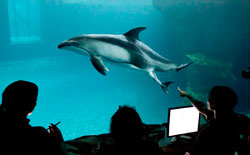 • June 3: Tique, the Pacific white-sided now back at Chicago’s Shedd Aquarium who got pregnant during a breeding stay at the Miami Seaquarium, gives birth to a female calf. The baby is her fourth. The other three, all male, are all dead. The first lived a day. The second, four days. The third was stillborn.
• June 3: Tique, the Pacific white-sided now back at Chicago’s Shedd Aquarium who got pregnant during a breeding stay at the Miami Seaquarium, gives birth to a female calf. The baby is her fourth. The other three, all male, are all dead. The first lived a day. The second, four days. The third was stillborn.
Tique’s new baby is born alive, but 12 hours after birth, she’s not nursing, so Shedd staffers have to start bottle-feeding her until mother and calf connect, which they hope will be soon.
• June 4: The Orlando Sentinel’s Jason Garcia reports that, a little less than two years after being sold to Blackstone Group in October 2009, SeaWorld Parks & Entertainment, a holding that former owner Anheuser-Busch InBev didn’t especially prize, has begun aggressively exploring new ways to grow and market the SeaWorld brand.
Now, in addition to investing in new shows and attractions at its U.S. parks, SeaWorld is expanding into movies, television, hotels and new marine parks overseas — probably in Southeast Asia, possibly in China, where capturing wild dolphins, belugas and killer whales and sticking them in tanks isn’t such a big deal.
An earlier plan to open a park in Dubai on an artificial island shaped like a killer whale hasn’t panned out. Yet.
• June 5: A few days after increasing one set of ticket prices, SeaWorld Orlando increases others: from $114.99 to $119.99 for a two-day combo ticket for adults (a $5 increase), and from $104.99 to $111.99 for a two-day combo for kids (a $7 increase).
These ticket prices are per adult and per child, of course, which adds up to $470 pre-tax for two-day combo tickets for a family of four.
The cost of the three-day combo ticket stays the same at $129.99 for adults and $119.99 for kids — maybe because they don’t sell well enough for SeaWorld to make much more by raising the price.
• June 7: Orlando Sentinel business columnist Beth Kassab floats the idea that if some of SeaWorld’s new commercial ventures prove sufficiently profitable, perhaps it will decide it doesn’t need to keep killer whales in tanks to make money and will phase out that part of the business. But when Kassab runs the idea past SeaWorld Parks president & CEO Jim Atchison, his response is basically, “Don’t hold your breath.”
• June 7: Bob Barker, loveable former host of “The Price Is Right,” teams up with PETA to produce a 30-second public service spot urging Americans not to go to SeaWorld during the approaching summer family vacation months.
“Life in cramped tanks is no prize for orcas and dolphins,” Barker says in the spot. “They want to be free with their families in the ocean. Many have died prematurely at SeaWorld after swimming in endless circles and performing dumb tricks day in and day out.”
SeaWorld responds that “PETA is an extremist organization,” SeaWorld is a great place that loves animals, and the public “would be better served if Mr. Barker and PETA would focus their energy on animals truly in need.”
To watch the 0:30 Bob Barker spot, click the image below.
• June 8: Chicago’s Shedd Aquarium announces that the new baby girl born to the Pacific white-sided named Tique on June 3 has finally started nursing. “We’re ecstatic but we remain cautious in our joy,” Executive VP of animal collections and training Ken Ramirez says in a statement. Mom and Baby have been trying to connect and finally did the day before. It’s only the first step , he says, but it’s “a major breakthrough.”
• June 9: Two days after mother and calf finally connect to start nursing, Tique’s new baby girl dies at Chicago’s Shedd Aquarium.
The death doesn’t happen at a SeaWorld park, but SeaWorld is complicit, because SeaWorld, Shedd and the Miami Seaquarium all cooperate in shuffling Pacific white-sides around (as they do other species) to encourage captive breeding. The shuffling is usually fruitless and always stressful to the animals involved. But if even one baby comes of it, to marine parks, it’s worth doing.
Well, a baby did come of it. And another baby went. The calf was Tique’s fourth: the fourth born and the fourth to die. And this little girl lived the longest — six days.
• June 10: SeaWorld’s new “One Ocean” killer whale show debuts at SeaWorld San Antonio, the third of SeaWorld’s three remaining parks.
SeaWorld had a fourth park in Ohio that became a Six Flags in 2001 (it’s closed now), and a number of SeaWorld’s killer whales have shuffled through all four. One was Kalina, now deceased, the original Baby Shamu, the first captive-born killer whale to survive.
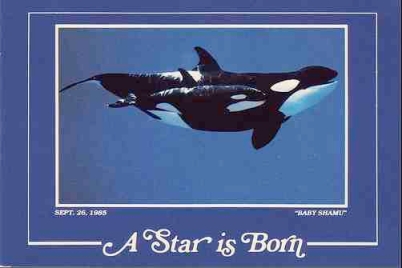 June 19: The Marine Mammal Conservancy in Key Largo announces that it has euthanized one of the three pilot whales it has been caring for since the May 5 Cudjoe Key stranding. The calf, dubbed 300, is the youngest of the three: only about 1½ years old. The other two — 301, about 2½, and 302, in her late teens or early 20s — are still holding on.
June 19: The Marine Mammal Conservancy in Key Largo announces that it has euthanized one of the three pilot whales it has been caring for since the May 5 Cudjoe Key stranding. The calf, dubbed 300, is the youngest of the three: only about 1½ years old. The other two — 301, about 2½, and 302, in her late teens or early 20s — are still holding on.
July 2011
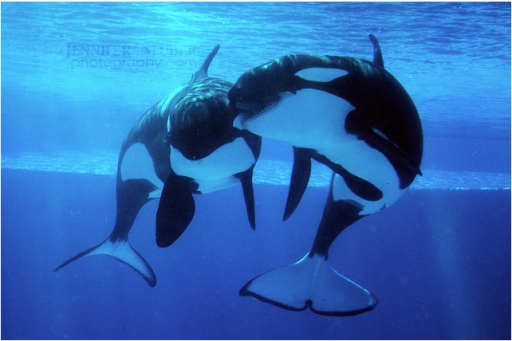 July 5: Ontario Superior Court Judge Richard Lococo tells Marineland of Canada: Sorry. Those other documents you want me to consider that you say show SeaWorld meant for you to keep the killer whale named Ike for life? You can keep them. The contract you signed says SeaWorld can reclaim him on 30 days notice after four years, and that’s what they’re doing. You agreed to it, so give him back.
July 5: Ontario Superior Court Judge Richard Lococo tells Marineland of Canada: Sorry. Those other documents you want me to consider that you say show SeaWorld meant for you to keep the killer whale named Ike for life? You can keep them. The contract you signed says SeaWorld can reclaim him on 30 days notice after four years, and that’s what they’re doing. You agreed to it, so give him back.
But Marineland isn’t ready to give in yet. Ike has an aggressive nature; both marine parks agree on that. And he and Marineland’s wild-caught female, Kiska, 37-ish — Ike’s sole tankmate since another, younger wild-caught female named Nootka died in January 2008 — haven’t always gotten along. Lately, though, there’s apparently been a burst of nuzzling, nipping and copulating.
And now SeaWorld wants to repossess Ike just when it looks like he’s finally getting ready to start making babies? Forget that. Marineland decides to appeal.
To watch a 0:23 video of Ike swimming with Kiska a few days after Judge Lococo’s ruling, click the image below.
 • July 14: Mike Clary of the Sun Sentinel reports that rescued pilot whale 301, the younger of the two females still being cared for at the Marine Mammal Conservancy in Key Largo, seems to be regaining her health and vitality while 302, her older Cudjoe Key stranding co-survivor, is still struggling — alive, but not doing so well.
• July 14: Mike Clary of the Sun Sentinel reports that rescued pilot whale 301, the younger of the two females still being cared for at the Marine Mammal Conservancy in Key Largo, seems to be regaining her health and vitality while 302, her older Cudjoe Key stranding co-survivor, is still struggling — alive, but not doing so well.
Meanwhile, data coming back from one of the transmitters attached to the two healthy male pilot whales who were released indicate that, wild and free, pilot whales travel far and dive deep and long: traveling, in this case, from Florida to the Bahamas to Cuba, and diving to 2,400 feet for 30 to 40 minutes at a time — a way of life made utterly impossible in a tank.
![]() • July 16: The Orlando Sentinel’s Jason Garcia reports that SeaWorld Orlando is just finishing construction of a new Cetacean Rehabilitation Facility, complete with a 40,000-gallon tank big enough to hold as many as five Bottlenose dolphins or, say, one 13-foot, rescued pilot whale.
• July 16: The Orlando Sentinel’s Jason Garcia reports that SeaWorld Orlando is just finishing construction of a new Cetacean Rehabilitation Facility, complete with a 40,000-gallon tank big enough to hold as many as five Bottlenose dolphins or, say, one 13-foot, rescued pilot whale.
The facility, tucked in a corner of the park’s grounds and off limits to the public, will have its own water-filtration system to prevent diseases from passing to SeaWorld’s other captive marine mammals through a shared water supply, as apparently happened 20 years ago, when a measles-like virus spread from rescued pilot whales and killed some of SeaWorld Orlando’s captive dolphins and other marine mammals.
After that, SeaWorld Orlando, lover of animals, stopped taking in stranded dolphins. But it was still fairly easy back then to capture healthy animals when you needed them. That’s not the case anymore, and, as Garcia notes, some animal-rights activists suspect that that’s why SeaWorld is getting back into the cetacean rescue business: not to rehab animals to release them, but to rehab them and add them to its captive collections and breeding programs.
SeaWorld denies this, of course. But SeaWorld would.
• July 16: A wild-caught Bottlenose dolphin named Mattie, about 17, gives birth to a female calf later named Bliss at SeaWorld San Antonio.
Bliss is Mattie’s third baby. The other two are dead. Mattie’s firstborn, a male, died at age three just as Mattie was about to give birth again. Her second baby, a female, was stillborn.
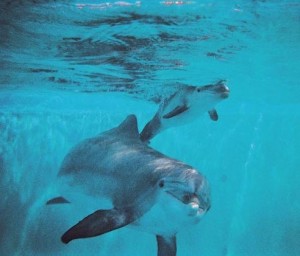 Mattie is an Atlantic Bottlenose. The father of her first calf was a wild-caught Pacific Bottlenose named Kai, now about 37 — a cross-breeding that wouldn’t happen in the wild. It’s unclear who fathered Mattie’s second calf. Her new baby’s dad was a wild-caught Atlantic Bottlenose named Hacksaw who died at about age 35 very shortly after Bliss was conceived.
Mattie is an Atlantic Bottlenose. The father of her first calf was a wild-caught Pacific Bottlenose named Kai, now about 37 — a cross-breeding that wouldn’t happen in the wild. It’s unclear who fathered Mattie’s second calf. Her new baby’s dad was a wild-caught Atlantic Bottlenose named Hacksaw who died at about age 35 very shortly after Bliss was conceived.
• July 17: Two Bottlenose births in San Antonio in two days. The day after Mattie gives birth to Bliss, a 27-year-old, captive-born female named Yoyo gives birth to a female calf later named Cocoa III.
Cocoa III is Yoyo’s eighth baby. Only one of her other babies is still alive: her second calf, Yoko, now 16. The other six died at ages 16, one day, a little less than five years, one year, two weeks, and one day. Her fourth and fifth babies died in May and August of 2004 — three months apart.
Yoko wasn’t with her mom in San Antonio to help her through that double loss (yes, dolphins grieve), and she isn’t present for the birth of her new half-sibling. She was shipped out to work as a swim-with-the-dolphins dolphin at SeaWorld Orlando’s Discovery Cove in April 2000, before she turned five.
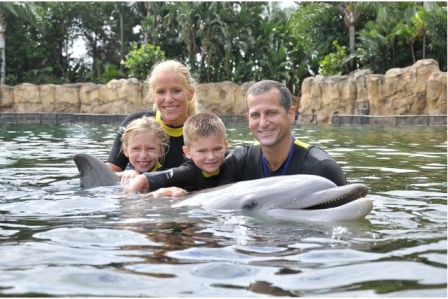 Yoko’s dad, a wild-caught male named Capricorn, now about 40, was shipped from San Antonio to Discovery Cove along with her. Capricorn has sired some 21 calves with 12 different females (four with Yoyo) since being captured in December 1972. Of those 21, 11 are living, 10 are dead.
Yoko’s dad, a wild-caught male named Capricorn, now about 40, was shipped from San Antonio to Discovery Cove along with her. Capricorn has sired some 21 calves with 12 different females (four with Yoyo) since being captured in December 1972. Of those 21, 11 are living, 10 are dead.
Capricorn now works as a swim-with-the-dolphins dolphin at Orlando’s Discovery Cove along with daughter Yoko, two of his other surviving San Antonio-born offspring, a bunch of other captive-born Bottlenose and six other wild-caught dolphins aged 30- to 40-plus.
Here’s how these dolphins earn their dead-fish meals now. Lester, in the second photo below, was captured with Capricorn, which makes him older than the human male in the photo with him.
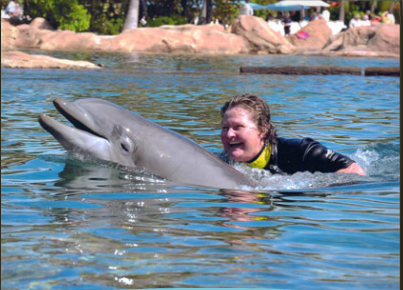 • July 19-20: Now we turn to Morgan, a female killer whale calf found floating thin and weak in the Wadden Sea off the Netherlands on June 23, 2010 and taken to the Dolfinarium in Harderwijk to be cared for until she was well enough to return to the sea.
• July 19-20: Now we turn to Morgan, a female killer whale calf found floating thin and weak in the Wadden Sea off the Netherlands on June 23, 2010 and taken to the Dolfinarium in Harderwijk to be cared for until she was well enough to return to the sea.
Or so a lot of people thought the plan was at the time.
To watch a 3:39 video of Morgan’s rescue, click the image below.
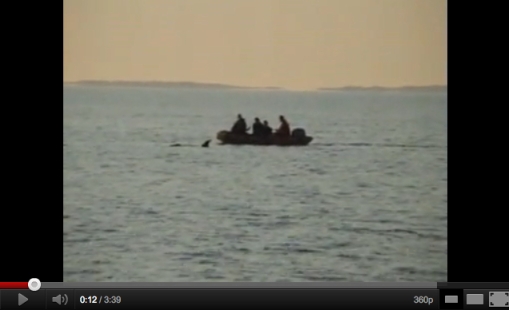 No sooner had Morgan arrived at the Dolfinarium in Harderwijk, however, than SeaWorld sent its own experts over to help with her care. And next thing you know, as Candace Calloway Whiting reported, Dolfinarium officials were changing their tune and saying they’d consider all possible future outcomes for Morgan and decide what was best for her when the time came.
No sooner had Morgan arrived at the Dolfinarium in Harderwijk, however, than SeaWorld sent its own experts over to help with her care. And next thing you know, as Candace Calloway Whiting reported, Dolfinarium officials were changing their tune and saying they’d consider all possible future outcomes for Morgan and decide what was best for her when the time came.
 Now, a year later, with Morgan returned to health, Calloway Whiting and the Orlando Sentinel’s Jason Garcia both report that SeaWorld has asked the Dutch government to let it move Morgan to Loro Parque in the Canary Islands to live with four orcas SeaWorld shipped there and one who was born there either permanently or until SeaWorld can move Morgan to the U.S.
Now, a year later, with Morgan returned to health, Calloway Whiting and the Orlando Sentinel’s Jason Garcia both report that SeaWorld has asked the Dutch government to let it move Morgan to Loro Parque in the Canary Islands to live with four orcas SeaWorld shipped there and one who was born there either permanently or until SeaWorld can move Morgan to the U.S.
Morgan defenders who want her returned to the sea are incensed and rally to her defense.
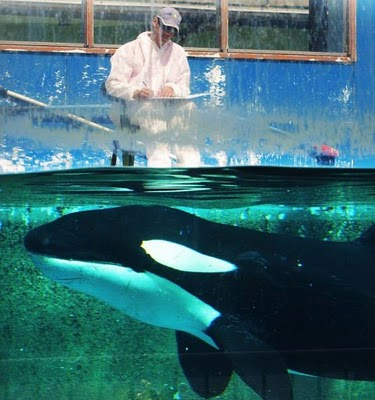 • July 23: SeaWorld Orlando’s brand new Cetacean Rehabilitation Facility gets its first occupant, and — surprise, surprise — it’s a rescued pilot whale: the younger of the two remaining Cudjoe Key stranding survivors who’ve been receiving care at the Marine Mammal Conservancy in Key Largo.
• July 23: SeaWorld Orlando’s brand new Cetacean Rehabilitation Facility gets its first occupant, and — surprise, surprise — it’s a rescued pilot whale: the younger of the two remaining Cudjoe Key stranding survivors who’ve been receiving care at the Marine Mammal Conservancy in Key Largo.
Now nine feet long and 600 pounds, the 2½-year-old dubbed 301 really can’t survive at sea on her own. So if she does well and proves healthy, SeaWorld San Diego will probably be her new home.
To watch a 1:04 video of 301 trying to make sense of her new Seaworld Orlando surroundings, click the image below.
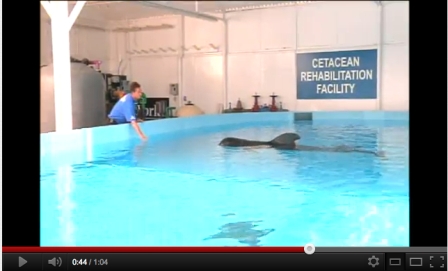 • July 24: A wild-caught Pacific white-sided named Lorelai dies at SeaWorld San Antonio at about age 32, leaving a daughter named Catalina, 18, and an eight-year-old son named Dart — the first white-sided conceived via A.I.
• July 24: A wild-caught Pacific white-sided named Lorelai dies at SeaWorld San Antonio at about age 32, leaving a daughter named Catalina, 18, and an eight-year-old son named Dart — the first white-sided conceived via A.I.
Lorelai’s daughter, Catalina, was fathered by Jump, mentioned earlier (sent from San Antonio to Shedd after 20-plus years, dead two years later). As happens only in captivity, Jump also fathered Catalina’s first baby, born before she turned six — meaning Catalina was pregnant by her own father before she turned five.
• July 26: An 18-year-old, captive-born Bottlenose dolphin named Ariel gives birth to a female calf later named Aurora at SeaWorld Orlando’s “dolphin nursery,” where, to quote from an article that sounds like it’s quoting directly from a SeaWorld press release (not uncommon), “expectant dolphins, new mothers, their calves and experienced moms live together for several years before moving on to the larger Dolphin Cove habitat.”
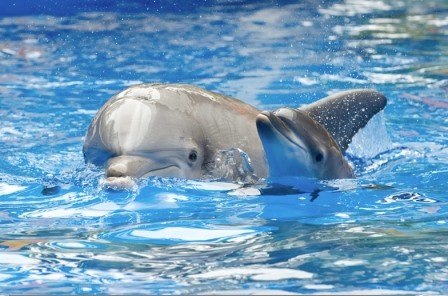 Aurora is Ariel’s fifth calf. Two of her other four are still with her in Orlando: a son, Alpha, nine; and a daughter, Alia, 3½. Aurora’s first calf died a day after birth, and a daughter named Cico died at age 1½.
Aurora is Ariel’s fifth calf. Two of her other four are still with her in Orlando: a son, Alpha, nine; and a daughter, Alia, 3½. Aurora’s first calf died a day after birth, and a daughter named Cico died at age 1½.
Ariel’s dad, a wild-caught male named Davy II, died at SeaWorld San Antonio in June 2007 at age 40-plus. Her mom, a wild-caught female named Betty III, is still alive at Marineland of Florida in St. Augustine, where the marine-park business got started back around 1951.
Betty is in her forties now and has had six babies so far. All but her firstborn are still alive: two at Marineland of Florida; two at SeaWorld Orlando; and one at the Georgia Aquarium’s big new dolphin exhibit.
The two who are still with Betty at Marineland are her oldest and her youngest. Her daughter Dazzle is 21. Her son Aqe is three. Betty has grandchildren older than her youngest boy.
August 2011
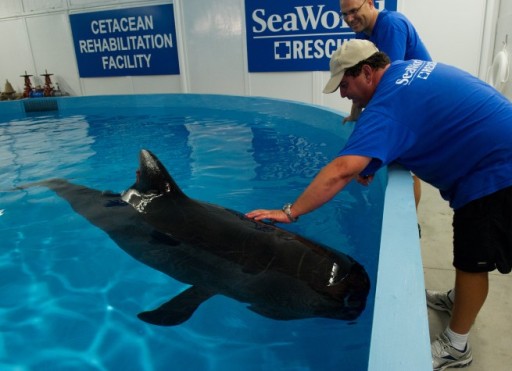 • Aug 1: Candace Calloway Whiting reports that, sure enough, now that the rescued female pilot whale calf dubbed 301 has arrived at SeaWorld Orlando’s Cetacean Rehabilitation Facility, the plan is to first make sure she’s healthy and then ship her to SeaWorld San Diego as a future mate for Sully, San Diego’s young male.
• Aug 1: Candace Calloway Whiting reports that, sure enough, now that the rescued female pilot whale calf dubbed 301 has arrived at SeaWorld Orlando’s Cetacean Rehabilitation Facility, the plan is to first make sure she’s healthy and then ship her to SeaWorld San Diego as a future mate for Sully, San Diego’s young male.
To watch a 1:18 SeaWorld video of head vet Chris Dold saying pretty much exactly that as 301 floats listlessly in her shallow rehab tank, click the image below.
 • Aug 3: After listening to arguments for and against, Amsterdam District Court Judge H. Kijlstra blocks SeaWorld’s application to move the young killer whale named Morgan, found stranded off the Netherlands in June 2010, from the Dolfinarium in Harderwijk, where she has been recovering her health, to SeaWorld’s sister facility Loro Parque in the Canary Islands.
• Aug 3: After listening to arguments for and against, Amsterdam District Court Judge H. Kijlstra blocks SeaWorld’s application to move the young killer whale named Morgan, found stranded off the Netherlands in June 2010, from the Dolfinarium in Harderwijk, where she has been recovering her health, to SeaWorld’s sister facility Loro Parque in the Canary Islands.
Judge Kijlstra orders all parties to sit down together and do a more thorough evaluation of whether Morgan can or can’t be returned to the sea. He also tells Dolfinarium Harderwijk to move her into a larger tank in the meantime so she can move around more and enjoy the company of other dolphins until her fate is determined.
Advocates fighting to keep Morgan out of SeaWorld’s clutches are encouraged by Judge Kijlstra’s decision. SeaWorld isn’t happy, but the battle isn’t over. What SeaWorld wants, SeaWorld usually gets.
• Aug 12: Marineland of Canada asks the Ontario Court of Appeals to put aside Judge Richard Lococo’s July 5 decision to let SeaWorld reclaim the killer whale named Ike and first give Marineland a chance to present evidence Lococo wouldn’t consider showing that, no matter what the breeding-loan contract says, SeaWorld really promised Marineland could keep Ike for life.
• Aug 16: SeaWorld Orlando’s Discovery Cove is struck by lightning, and three visitors and five employees are taken to the hospital.
Follow-up reports indicate that no humans are seriously hurt. WESH 2 News reporter Cara Moore mentions more than once in her report that some park guests were swimming with dolphins when lightning struck close by. Moore talks to a few of these people, who say they were hurried out of the water and it was scary, but they’re okay.
But what about the dolphins, who are also in the water and unable to take shelter on land? Moore either doesn’t ask or her inquiry gets edited out.
No reports surface later that any dolphins are injured, which suggests they’re not. But no print or broadcast report even mentions them.
Only one Disney message board poster thinks to inquire. “Hoping the captive dolphins were not harmed,” the poster named Schmeck writes. “They have no way of getting out of harm’s way during a storm, do they?” So far, no response.
To watch Cara Moore’s 2:05 WESH TV report, click the image below.
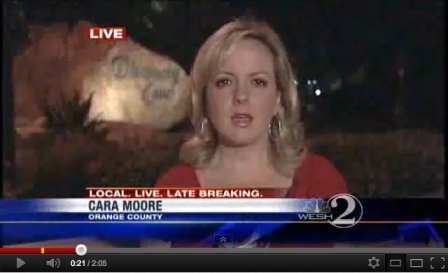 • Aug 17: The Sun Sentinel’s Robert Nolin reports on a local dust-up about what to do with the lone female pilot whale still being cared for at Key Largo’s Marine Mammal Conservancy now that her younger Cudjoe Key stranding co-survivor has moved to SeaWorld Orlando.
• Aug 17: The Sun Sentinel’s Robert Nolin reports on a local dust-up about what to do with the lone female pilot whale still being cared for at Key Largo’s Marine Mammal Conservancy now that her younger Cudjoe Key stranding co-survivor has moved to SeaWorld Orlando.
Pilot whale 300 — known earlier as 302, now also called Caroline — finally seems to be recovering from pneumonia. But she has lung damage and suffers from severe curvature of the spine, which may or may not have been caused by injury during rescue.
If Caroline stranded that way, she’s living proof of the supportive and protective nature of the pilot whale pod way of life. (Pilot whales are known to share food.) Either way, she can’t survive in the wild on her own.
So what to do with her? Local activist Russ Rector wants her euthanized, but the MMC and NMFS say no way. She’s recovering well. Better to let her live in captivity.
To watch a 2:17 CBS Miami update on Caroline’s situation, click the image below, scroll down a bit and wait for the video to load.
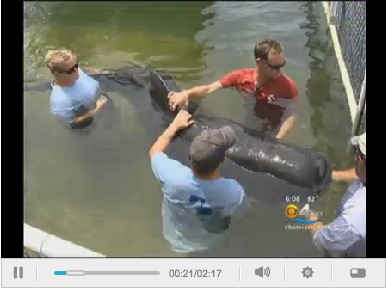 • Aug 20: Kevin Wadlow of the Florida Keys Keynoter reports that NMFS has decided Pilot Whale 300 is unreleasable and has notified marine parks that she’s up for adoption by any facility that can take care of her. Read: SeaWorld. No other U.S. marine park even has pilot whales. SeaWorld now has four: three in San Diego; and the younger female Cudjoe Key stranding survivor, 301, now named Fredi, in Orlando.
• Aug 20: Kevin Wadlow of the Florida Keys Keynoter reports that NMFS has decided Pilot Whale 300 is unreleasable and has notified marine parks that she’s up for adoption by any facility that can take care of her. Read: SeaWorld. No other U.S. marine park even has pilot whales. SeaWorld now has four: three in San Diego; and the younger female Cudjoe Key stranding survivor, 301, now named Fredi, in Orlando.
• Aug 22: A wild-caught Bottlenose dolphin named Cometta, aged 27 or so, gives birth to a female calf later named Constance at SeaWorld San Diego. Constance is Cometta’s fourth calf. Her first, a male named Baretta, is a hybrid. His dad is Kai, the Pacific Bottlenose who also fathered Mattie’s first calf in San Antonio. Kai’s been around.
Baretta is at SeaWorld Orlando now. Cometta’s two older girls, Corona and Venus, 11 and seven, are still with her in San Diego. The girls are full sisters, both fathered by a wild-caught Atlantic Bottlenose named Crunch who has sired some 16 calves by 13 females since he was captured in April 1982. Eleven of his offspring are still living. Five are dead.
It’s unclear who fathered Cometta’s new baby girl. Maybe Crunch again.
To watch a 1:03 video of Cometta swimming with newborn Constance and a female companion, click the image below.
 To watch a 2:20 video that offers a glimpse of the unglamorous, barren, behind-the-scenes life that Cometta, Constance and other SeaWorld San Diego dolphins live when not performing, click the image below.
To watch a 2:20 video that offers a glimpse of the unglamorous, barren, behind-the-scenes life that Cometta, Constance and other SeaWorld San Diego dolphins live when not performing, click the image below.
 • Aug 29:The Orlando Sentinel’s Jason Garcia reports that NMFS has approved SeaWorld Orlando’s application to take possession of Caroline (pilot whale 300), the lone survivor of the Cudjoe Key stranding still being cared for at the Marine Mammal Conservancy in Key Largo.
• Aug 29:The Orlando Sentinel’s Jason Garcia reports that NMFS has approved SeaWorld Orlando’s application to take possession of Caroline (pilot whale 300), the lone survivor of the Cudjoe Key stranding still being cared for at the Marine Mammal Conservancy in Key Largo.
Caroline’s younger co-survivor, 301, now named Fredi, has moved from SeaWorld Orlando’s primary Cetacean Rehabilitation pool into a different pool with two dolphin companions to make room for Caroline.
September 2011
• Sept 6: With a September 19 start-date set for the long-postponed hearing that SeaWorld Orlando requested to contest the charges OSHA leveled against it after investigating killer-whale-trainer working conditions in the wake of Dawn Brancheau’s death, former Orlando trainer John Jett, now a college professor, talks to the Orlando Sentinel’s Jason Garcia and other reporters about some of the ways he has learned only since leaving SeaWorld that the marine park puts trainers at risk.
Like: by keeping incomplete records of aggression, attacks and trainer injuries in the files it keeps on each killer whale.
And: by not sharing notes on “behaviors to be aware of” that trainers put in the files so other trainers can be aware of them.
Garcia cites examples of this lack of transparency from files someone has leaked to Jett about SeaWorld San Diego’s wild-caught orca Ulises and SeaWorld San Antonio’s captive-born male Kyquot (Ky). Both files contain notes stipulating that trainers are not to enter the water with either of them. But neither file explaines why.
More telling: Tilikum’s SeaWorld Orlando file includes only the briefest mention of the two fatalities that were on his record before he attacked Dawn Brancheau and doesn’t mention that his attack on Brancheau took her life.
To watch a 4:53 MSNBC video of Kyquot roughing up trainer Steve Aibel during a performance at SeaWorld San Antonio on July 26, 2004 (perhaps the reason trainers aren’t allowed in the water with him anymore), click the image below.
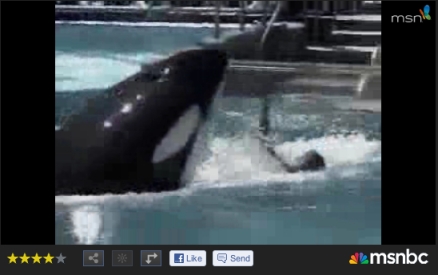 To watch 2:28, 0:58 and 0:23 videos of what life in captivity is like for magnificent Ulises, captured off Iceland in December 1981 and now SeaWorld San Diego’s largest and lowest-ranking orca (in killer whale societies, females rule), click the images below.
To watch 2:28, 0:58 and 0:23 videos of what life in captivity is like for magnificent Ulises, captured off Iceland in December 1981 and now SeaWorld San Diego’s largest and lowest-ranking orca (in killer whale societies, females rule), click the images below.
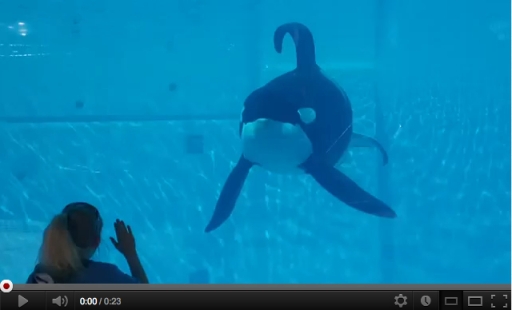 • Sept 7: Orange County Florida Judge Julie O’Kane dismisses a lawsuit filed by New Hampshire couple Suzanne and Todd Connell a year before, claiming that their then ten-year-old son, Bobby, was severely traumatized by watching Tilikum thrash and kill Dawn Brancheau right after a “Dine with Shamu” demonstration at SeaWorld Orlando on February 24, 2010.
• Sept 7: Orange County Florida Judge Julie O’Kane dismisses a lawsuit filed by New Hampshire couple Suzanne and Todd Connell a year before, claiming that their then ten-year-old son, Bobby, was severely traumatized by watching Tilikum thrash and kill Dawn Brancheau right after a “Dine with Shamu” demonstration at SeaWorld Orlando on February 24, 2010.
No one’s saying Bobby wasn’t traumatized. The question is whether SeaWorld is responsible. SeaWorld says no, and O’Kane agrees.
Todd Connell videotaped the “Dine with Shamu” demonstration he and his family were watching that day. He stopped videotaping moments before Tilikum pulled Brancheau into the pool. To view his 6:56 video, click the image below.
 • Sept 7: Meanwhile, also on September 7, Dawn Brancheau’s widower, Scott Brancheau, asks another judge to gaurantee that a SeaWorld Orlando surveillance tape that did record Tilikum’s horrific attack on his wife is never made public.
• Sept 7: Meanwhile, also on September 7, Dawn Brancheau’s widower, Scott Brancheau, asks another judge to gaurantee that a SeaWorld Orlando surveillance tape that did record Tilikum’s horrific attack on his wife is never made public.
One judge has already ruled that the tape be sealed, but that ruling doesn’t apply to OSHA, which could release the tapes and the medical examiner’s photographs that were part of its investigation and/or show them during the upcoming SeaWorld/OSHA hearing.
Scott Brancheau wants District Court Judge Gregory A. Presnell to tell OSHA that if it does show any footage or photos during the hearing, it must be behind closed doors.
• Sept 7: Meanwhile, also on September 7, an unnamed reporter for Tampa Bay’s WKMG Channel 6 News gets a peak at a pre-hearing document in which OSHA asks SeaWorld Orlando executives why new employees are given a special “Tilly talk” and why trainers are warned that if they ever get or end up in the water with Tilikum they might not get out alive.
SeaWorld’s basic response: “We don’t know what you’re talking about. It’s all lies.”
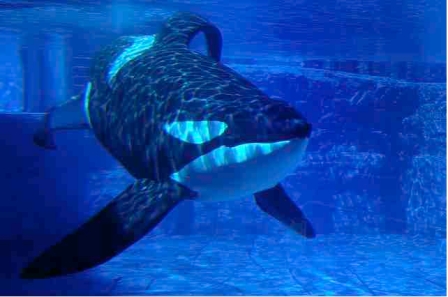 • Sept 9: As ordered by Amsterdam District Court Judge H. Kijlstra, people on all sides of the argument about what to do with Morgan, the young killer whale found alone and weak off the Netherlands, meet with Henk Bleker and Folchertvan Dijken, Secretary and minister of agriculture and foreign trade, to try to reach some consensus about what’s best for her.
• Sept 9: As ordered by Amsterdam District Court Judge H. Kijlstra, people on all sides of the argument about what to do with Morgan, the young killer whale found alone and weak off the Netherlands, meet with Henk Bleker and Folchertvan Dijken, Secretary and minister of agriculture and foreign trade, to try to reach some consensus about what’s best for her.
Representatives of Free Morgan and the Orca Coalition come with a preliminary plan and site for rehabilitating and releasing her back into the wild. But representatives of Dolfinarium Harderwijk, where Morgan still resides and SeaWorld experts have been advising on her care, say they won’t cooperate with any release effort.
Dolfinarium’s representatives say they don’t believe Morgan can survive in the wild. They’re more inclined to let SeaWorld move her to Loro Parque in the Canary Islands.
Loro Parque representatives describe their facility as a place where Morgan will participate in serious orca research, not just do shows, and where the five killer whales already in residence will welcome her into their happy family group.
Not true, killer whale specialist Ingrid Visser writes in a letter submitted after the meeting. The four captive-born orcas SeaWorld shipped to Loro Parque in February 2006 (the same year it sent Ike to Canada) are not a natural family group, do not get along, are aggressive with one another and are often held in separate pools.
Loro Parque’s fifth orca resident, a one-year-old calf named Adan, had to be taken away from his too-young, uninterested, hostile mother and hand-raised by humans from birth.
There’s a chance, on the other hand, Morgan’s freedom fighters say, that if Morgan isn’t sent to Loro Parque, her honest-to-goodness wild family group could be identified and, if Secretary Bleker goes with the rehab plan, Morgan could be reunited with them.
Which will it be?
To watch a 5:34 video of Morgan in her shallow, narrow, barren tank in Harderwijk and see evidence that her caretakers are already training her to perform behaviors on human command, click the image below.
• Sept 9: On the day pro- and anti-captivity factions meet in the Netherlands to discuss Morgan’s fate, a band of marine-mammal activists releases a public service announcement to promote the cause of keeping Morgan out of SeaWorld’s possession.
Jean-Michel Cousteau, son of famed ocean explorer Jacques Cousteau, is featured prominently.
“We have learned a long time ago that marine mammals in captivity are like humans in jail,” Cousteau says. “Orcas are absolutely fascinating creatures. They are to the ocean what we are to the land. We need to respect them as the most sophisticated creature in the marine environment.”
To watch the 3:52 PSA, click either image below.
 • Sept 12: Pilot whale 300, aka Caroline, the older of the two female survivors of the Cudjoe Key stranding — the one with lung damage and severe curvature of the spine — moves from Key Largo’s Marine Mammal Conservancy to a pool at SeaWorld Orlando’s Cetacean Rehabilitation Facility last occupied by her younger co-survivor, 301, renamed Fredi and now part of SeaWorld’s permanent collection.
• Sept 12: Pilot whale 300, aka Caroline, the older of the two female survivors of the Cudjoe Key stranding — the one with lung damage and severe curvature of the spine — moves from Key Largo’s Marine Mammal Conservancy to a pool at SeaWorld Orlando’s Cetacean Rehabilitation Facility last occupied by her younger co-survivor, 301, renamed Fredi and now part of SeaWorld’s permanent collection.
SeaWorld’s stated goal for both females: get them healthy enough to send to SeaWorld San Diego to join San Diego’s two older females and one young male and eventually make captive babies.
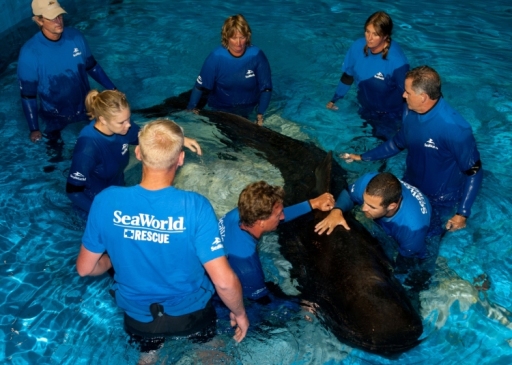 • Sept 15: U.S. District Court Judge Gregory A. Presnell denies the Brancheau family’s request to prohibit OSHA from ever releasing any investigation-related video footage or photos of Dawn Brancheau’s death. Presnell grants the family’s request, however, to instruct OSHA that if it plays video or shows any photos during the upcoming SeaWorld/OSHA hearing, it must do so behind closed doors.
• Sept 15: U.S. District Court Judge Gregory A. Presnell denies the Brancheau family’s request to prohibit OSHA from ever releasing any investigation-related video footage or photos of Dawn Brancheau’s death. Presnell grants the family’s request, however, to instruct OSHA that if it plays video or shows any photos during the upcoming SeaWorld/OSHA hearing, it must do so behind closed doors.
• Sept 16: The Orlando Sentinel’s Jason Garcia reports on what’s really at stake for SeaWorld in its upcoming effort to get OSHA’s citations and fines dismissed. The fine — $75,000 — is chump change for the $1.2 billion-a-year company. The problem is OSHA’s finding that SeaWorld willfully disregarded trainer safety and shouldn’t let trainers get in the water with or even close to killer whales again until it installs proven means of protecting them.
The reason this is such a big deal: In-water, trainer-orca interactions, called “water work,” are SeaWorld’s big draw, no matter how it tries to distract from their absence in its new “One Ocean” show with big LED screens and loud music and spurting fountains.
Whether SeaWorld admits it or not, without trainers and orcas cavorting in the water together, the new “One Ocean” show is boring, and if SeaWorld can’t make OSHA’S pesky rulings go away, it may be a long time before it can put trainers back in the water to spice things up.
The finding of “willful” disregard for trainer safety is also serious, because it leaves SeaWorld vulnerable to civil suits by injured trainers and surviving family members of trainers who’ve been killed.
The whole ugly business also puts a black stain on SeaWorld’s carefully cultivated image as a wholesome, family-fun, vacation destination where the orcas and humans are one big happy family, too.
To watch a 4:06 video of the kind of water work trainers and orcas did together before Tilikum killed Dawn Brancheau — impressive, no denying it — click the image below.
• Sept 16: A deep-water dwelling Risso’s dolphin found stranded on Florida’s New Smyrna Beach is transported to SeaWorld Orlando’s Cetacean Rehabilitation Facility, where it dies within 24 hours.
A species seldom seen within 50 miles of land, Risso’s dolphins — like pilot whales, killer whales and Bottlenose dolphins — live in large family groups. A mature adult, judging from the wear on his teeth, this individual didn’t show any obvious signs of illness, but the fact that he was found alone and stranded didn’t bode well.
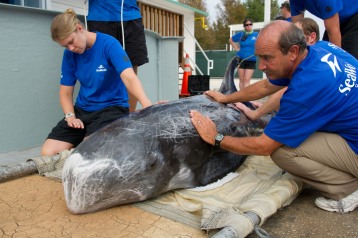 • Sept 19: The long-delayed SeaWorld/OSHA hearing finally gets underway in Adminstrative Law Judge Ken S. Welsch’s Sanford, Florida courtoom. The issues at hand:
• Sept 19: The long-delayed SeaWorld/OSHA hearing finally gets underway in Adminstrative Law Judge Ken S. Welsch’s Sanford, Florida courtoom. The issues at hand:
1. Was OSHA right to cite SeaWorld for willful disregard for trainer safety by allowing trainers to work near and in the water with orcas without adequate protection?
2. Should OSHA’s determination that trainers be kept out of the water and at a safe distance from orcas until this problem is rectified stand or fall?
The Orlando Sentinel‘s Jason Garcia reports that the only person OSHA calls to the stand today is SeaWorld Orlando’s Curator of Animal Training Kelly Flaherty Clark, who insists during four hours of testimony that killer whale trainers get long, careful, thorough training before they’re allowed anywhere near a killer whale, that the orcas are also taught and taught and taught to play nice with trainers, that trainers are schooled in how to recognize signs that an orca is getting agitated, and that in 25 years of reviewing incident reports, she never saw one that didn’t tell her the incident was in some way the trainer’s fault.
The only exception, says Flaherty Clark: Tilikum’s attack on Dawn Brancheau. And that attack came as a total shock, she says, because even though Tilikum had been involved in two earlier deaths, he just never gave any signs that he’d ever do anything like pull a trainer into a pool.
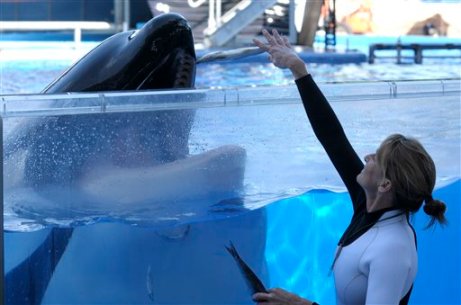 Flaherty Clark also says that trainers need to be able to get in the water with SeaWorld’s orcas to keep tabs on how they’re doing healthwise and basically says it’s OSHA’s fault that 25-year-old Kalina, the original Baby Shamu, died at SeaWorld Orlando in October 2010.
Flaherty Clark also says that trainers need to be able to get in the water with SeaWorld’s orcas to keep tabs on how they’re doing healthwise and basically says it’s OSHA’s fault that 25-year-old Kalina, the original Baby Shamu, died at SeaWorld Orlando in October 2010.
If trainers had been able to get in the water with Kalina instead of having to interact with her only from poolside, Flaherty Clark says, getty teary-eyed, they might have realized sooner that she was ailing and been able to save her.
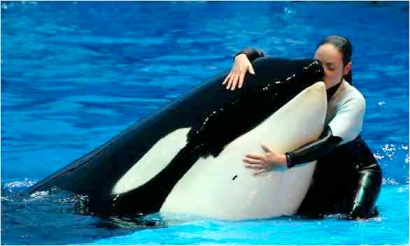 What Flaherty Clark doesn’t say: SeaWorld actually lost four orcas within eight months of Dawn Brancheau’s death:
What Flaherty Clark doesn’t say: SeaWorld actually lost four orcas within eight months of Dawn Brancheau’s death:
1. Captive-born Taima, 21, who died giving birth in Orlando on June 6, 2010.
2. Taima’s full-term calf (fathered by Tilikum), who died with her.
3. Twelve-year-old Sumar (also fathered by Tilikum), who died suddenly in San Diego on September 7, dashing SeaWorld’s hope that he would take over Tilikum’s role as champion captive male breeder.
4. Kalina, the original Baby Shamu, the first captive-born orca to survive, who died suddenly in Orlando on October 4, 2010 in the same tank with her wild-caught mother, Katina, five days before Katina gave birth to a new calf.
Katina’s new calf, later named Makaio, is also Tilikum’s son.
 • Sept 20: Timed to coincide with the start of the OSHA/SeaWorld hearing, wired.com publishes an interview with former SeaWorld killer-whale trainer Jeff Ventre, who argues that captive orca attacks on trainers are a product of the stress of captivity (no wild orca has ever attacked a human being) and discusses some of the unpleasant realities of captive killer whale existence that Seaworld works hard to keep from the public: broken teeth, premature pregnancies, bad mothering, early deaths….
• Sept 20: Timed to coincide with the start of the OSHA/SeaWorld hearing, wired.com publishes an interview with former SeaWorld killer-whale trainer Jeff Ventre, who argues that captive orca attacks on trainers are a product of the stress of captivity (no wild orca has ever attacked a human being) and discusses some of the unpleasant realities of captive killer whale existence that Seaworld works hard to keep from the public: broken teeth, premature pregnancies, bad mothering, early deaths….
A 5:02 video called “A Better Way to See Orcas” conveys even more powerfully what captivity does to killer whales and the families from which wild orcas are taken, and how the barren, demeaning life they live in captivity contrasts with the rich, beautiful, complex, family-oriented lives they live in the wild.
To watch this beautiful video, created by Leah Lemieux and edited by Lori Marino, click the image below.
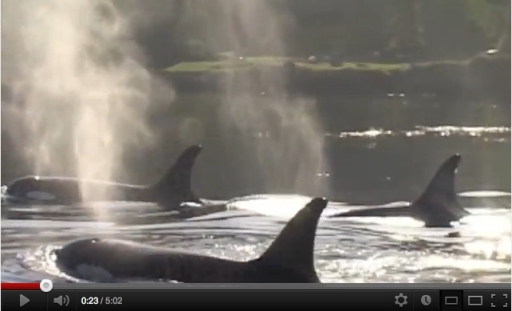 • Sept 20: On Day 2 of the SeaWorld/OSHA hearing, SeaWorld Orlando Security Officer Fredy Hererra says that, from where he stood watching on the day Tilikum attacked Dawn Brancheau, it looked like Tilikum grabbed her by her left arm, not by her ponytail.
• Sept 20: On Day 2 of the SeaWorld/OSHA hearing, SeaWorld Orlando Security Officer Fredy Hererra says that, from where he stood watching on the day Tilikum attacked Dawn Brancheau, it looked like Tilikum grabbed her by her left arm, not by her ponytail.
This matters, because SeaWorld insists Tilikum grabbed Brancheau’s ponytail and basically tried to blame Brancheau right after the attack for letting him grab it.
 Also on Day 2, SeaWorld’s corporate zoological operations chief Chuck Tomkins insists that trainers don’t need barriers and safety gizmos to protect them from the orcas because they know how to spot the “precursors” of negative behavior.
Also on Day 2, SeaWorld’s corporate zoological operations chief Chuck Tomkins insists that trainers don’t need barriers and safety gizmos to protect them from the orcas because they know how to spot the “precursors” of negative behavior.
Never mind that either Tilikum didn’t broadcast these precursors or Brancheau didn’t spot them the day she was killed and that another SeaWorld-bred killer whale named Keto killed a trainer named Alexis Martinez at Loro Parque in the Canary Islands just two months before Tilikum killed Brancheau. Those were tragic aberrations.
Also on Day 2, however, SeaWorld Orlando senior killer-whale trainer Lynne Schaber testifies that trainers did and do know Tilikum is dangerous, that a whole section of the trainers’ manual is devoted to him, that it’s well known that once he gets hold of objects in the pool he doesn’t give them back, and that she “could assume, possibly understand” that this behavior would also apply to humans.
Before the hearing ends for the day, OSHA also screens the video shot by Todd Connell of Brancheau interacting with Tilikum moments before her death.
• Sept 21: The Orlando Sentinel’s Jason Garcia reports on the sparring between OSHA and SeaWorld during Day 3 of testimony, with SeaWorld corporate curator of zoolocial operations Chuck Tompkins insisting that SeaWorld keeps absolutely complete and up-to-date records of all killer whale attacks and acts of aggression and OSHA’s Department of Labor lawyer John Black countering that, no, it does not — SeaWorld doesn’t even have any detailed report of Tilikum’s attack on Dawn Brancheau anywhere in his file.
OSHA also screens video footage of another killer-whale attack it investigated at SeaWorld San Diego in November 2006, when a wild-caught female named Kasatka dragged trainer Ken Peters to the bottom of the tank and held him there until he intentionally went limp, whereupon she let him go.
To watch a 1:32 CBS News report on that attack, click the image below.
• Sept 22: On Day 4 of the SeaWorld/OSHA hearing, SeaWorld Orlando calls its first witness, and former killer-whale trainer Jan Topoleski says that from where he stood about 20 feet from Dawn Brancheau on the day Tilikum grabbed her, he saw her go from lying on her belly at poolside to up on her knees and then reach for her ponytail as if to free it from Tilikum’s grasp. Which could be true — or not.
The Orlando Sentinel’s Jason Garcia reports that Topoleski switched from working with killer whales to working with sea lions after the attack and that Shana Groves, another former killer-whale trainer who testifies today, did the same thing.
Defending SeaWorld Orlando’s safety practices, Groves says it’s really hammered into trainers that Tilikum is a killer and that if any trainer ends up in the water with him, he or she might not survive.
“I was at SeaWorld for seven years before I could even open a Tilikum gate,” Groves says. “That’s how precautionary we were.”
The SeaWorld/OSHA hearing is supposed to end the next day, but Judge Welsch announces that it clearly needs to go another week and will have to reconvene in October or November, depending on his court calendar.
• Sept 23: The first week of testimony in the SeaWorld/OSHA hearing wraps up with OSHA’s Tampa area director Les Grove reiterating that SeaWorld knew it was putting trainers at risk by letting them get close to and in the water with captive orcas without sufficient protocols in place to insure their safety and by letting them get anywhere near Tilikum at all.
Judge Welsh announces that the hearing will resume on Tuesday, November 15. The bulk of SeaWorld’s witnesses will testify then.
• Sept 28: Marineland of Canada strikes out in its effort to get the Ontario Court of Appeals to prevent SeaWorld from reclaiming the killer whale named Ike until Marineland can present its case for keeping him.
Writing for the three-judge panel that heard Marineland’s August 12 appeal, Judge Sharpe Goudge afffirms the lower court’s ruling that Seaworld is acting with its contractual rights.
And not only that. Because Marineland refused to simply honor that contract and insisted on wasting everyone’s time and money trying to fight it, Marineland must now not only surrender Ike immediately but must also reimburse SeaWorld for about $15,000 in court costs.
SeaWorld says it’s “gratified” by the ruling and plans to come get Ike asap. Marineland threatens to pursue other legal remedies in the U.S.
October 2011
 • Oct 7: Casey Grove of Anchorage Daily News reports that three killer whales — two adults and one juvenile — have been sighted repeatedly over the past three weeks swimming way up southwest Alaska’s Nushagak River, about 30 miles from where the freshwater river meets the saltwater bay.
• Oct 7: Casey Grove of Anchorage Daily News reports that three killer whales — two adults and one juvenile — have been sighted repeatedly over the past three weeks swimming way up southwest Alaska’s Nushagak River, about 30 miles from where the freshwater river meets the saltwater bay.
Killer whales have been seen at the mouth of the river before but never this far inland, and wildlife officials are concerned. Orcas are saltwater creatures who don’t do well in fresh water. NOAA Alaska fisheries spokesperson Julie Speegle says they’ve already developed a film on their skins, not a good sign, and cold weather and dropping water levels could block their return to the sea.
• Oct 9: Jackie Bartz and Chris Klint of KTUU Channel 2 News report that two of the three killer whales spotted swimming up Alaska’s Nushagak River have now been found dead — one beached, one floating, about two miles apart — and that the third, the juvenile, was last seen moving down river toward the bay.
Killer whale experts will try to find the juvenile, and NOAA spokesperson Julie Speegle says a team of experts will perform necropies on the two dead adults.
• Oct 10: Jackie Bartz of KTUU Channel 2 News reports that a SeaWorld expert later identified as pathology research specialist Judy St. Leger is flying from San Diego to Alaska to lead the team of vets who will perform necropies on the two killer whales found dead in the Nushagak River, and Candace Calloway Whiting wonders why.
Her suspicions: SeaWorld wants to try to locate the still-missing juvenile and/or extract viable sperm from the dead whales for its A.I. program.
When Calloway Whiting tries to find out if her hunches are right or wrong, she hits a wall.
• Oct 12: After weighing statements and plans for more than a month, Dutch State Secretary for Economic Affairs Henk Bleker decides that rehabilitation and release are not feasible for the young rescued female killer whale named Morgan and it’s better to send her to Loro Parque in the Canary Islands to live in captivity with SeaWorld’s captive-bred killer whales.
Dolfinarium Harderwijk, where Morgan has lived for more than a year now, wants her gone quickly because she’s getting too big for her tank. (The Dolfinarium ignored an earlier court order to move her to a larger one.)
The Orca Coalition says it will appeal.
• Oct 13: NOAA Alaska Fisheries spokesperson Julie Speegle says that the necropsies performed on the two adult killer whales found dead 30 miles up Alaska’s Nashaguk River reveal that both were female and one was about to give birth.
Researchers still don’t really know what killed them. Vets are taking “samples” for further analysis. Whether SeaWorld is harvesting other parts for other purposes isn’t clear.
The fate of the juvenile is unknown.
• Oct 16: The third of the three orcas who wandered upriver in Alaska is found dead very near to where the river meets a saltwater bay — swam there as opposed to died and floated there, officials are pretty sure. “It at least had the strength to swim that far,” NOAA spokesperson Julie Speegle tells Reuters.
The three were almost certainly closely related: mother, daughter, child. The juvenile’s gender is unspecified, and it’s unclear if a necropsy will be performed. If necropsies are a means to harvest sperm for SeaWorld’s A.I. program and the juvenile was sexually immature, there’s no need.
• Oct 16: Still unwilling to let SeaWorld reclaim the nine-year-old killer whale named Ike and having exhausted its legal options in its own country, Marineland of Canada files suit in a U.S. District Court in Orlando (SeaWorld’s corporate hub) to be allowed to make a legal argument in U.S courts for keeping him.
• Oct 23: Florida visitor Ralph Valanzuolo of Connecticut spots a dolphin or whale, something, stranded in shallow water while strolling along a beach on Florida’s Manasota Key and goes into the water to investigate. It’s a melon-headed whale, actually a species of dolphin.
A few moment’s later, Sarasota residents Herb and Beth Silverstein come down the beach, see Valazuolo waving, figure out what’s going on and call Mote Marine Laboratory in Sarasota, which sends a rescue team to transfer the juvenile, later named Dante, to Mote’s Dolphin and Whale Hospital.
He’s in bad shape, and it’s too soon to tell if he’ll live or die.
 • Oct 24: After filing suit in U.S. District Court in Orlando to be allowed to make a case for keeping the killer whale named Ike, Marineland of Canada now asks the judge to stop SeaWorld from moving Ike until Marineland has its day in court.
• Oct 24: After filing suit in U.S. District Court in Orlando to be allowed to make a case for keeping the killer whale named Ike, Marineland of Canada now asks the judge to stop SeaWorld from moving Ike until Marineland has its day in court.
Among the arguments Marineland includes in its petition: “Removing Ike from Marineland would put his health and wellbeing at serious risk. Additionally, separating Ike from his female companion, ‘Kiska,’ would put both whales’ health and wellbeing in peril.”
Moving a killer whale from one park to another also entails stress and risk for the animal, Marineland notes. Which is true. But Marineland wouldn’t care two figs about that if it were receiving a killer whale instead of losing one.
• Oct 26: People for the Ethical Treatment of Animals (PETA) and sympathetic activists including Ric O’Barry, star of the Academy Award-winning documentary “The Cove,” file suit against SeaWorld in San Diego’s U.S. District Court on behalf of the five captured killer whales in SeaWorld’s collection: Corky, Kasatka and Ulises in San Diego; and Tilikum and Katina in Orlando.
All five were snatched from their families, societies and natural environments against their will, the suit contends, and forced into captivity in violation of the Thirteenth Amendment’s protections against slavery and involuntary servitude — which PETA argues should be extended to cetaceans (dolphins and whales).
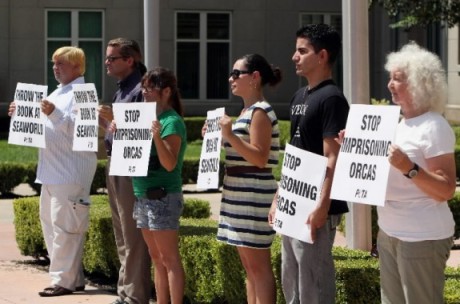 SeaWorld calls the suit a “baseless publicity stunt.” PETA calls it a serious attempt to get an American court to apply Thirteenth Amendment protections to “non-human animals.”
SeaWorld calls the suit a “baseless publicity stunt.” PETA calls it a serious attempt to get an American court to apply Thirteenth Amendment protections to “non-human animals.”
Some commentators scoff. Others don’t support the suit but do support rethinking our relationship to cetaceans — these big-brained, intelligent, self-aware, family-oriented, socially sophisticated, air-breathing mammals who are so different from and yet so very much like us.
To read the suit, click here, then click on “filing a lawsuit” in the second line of text.
• Oct 28: The young male melon-headed whale named Dante found stranded off Florida’s Manasota Key five days ago is still hanging in at Mote Marine Lab’s Dolphin and Whale Hospital in Sarasota but needs more care. Care is expensive. SeaWorld Orlando has more money and a bigger rehab facility than Mote does. So off Dante goes to SeaWorld Orlando for further rehab and a life in captivity if he survives.
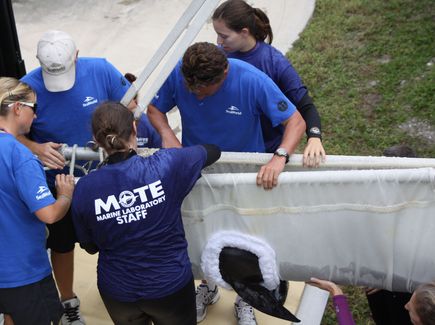 To watch a 0:54 video of Dante’s arrival in Orlando and see SeaWorld staffers giving him genuinely tender care, click the image below and then click the video at left.
To watch a 0:54 video of Dante’s arrival in Orlando and see SeaWorld staffers giving him genuinely tender care, click the image below and then click the video at left.
November 2011
• Nov 1-3: A 29-year-old, captive-born Bottlenose dolphin named Puka dies at SeaWorld San Antonio, and her death isn’t reported anywhere. How did she die? Exactly when did she die? What’s her life story?
Mostly lost, is what it is. SeaWorld publicizes births, not deaths, and captive dolphins and whales look so alike to the marine-park-visiting public that they’re interchangeable for commercial purposes, which is just how marine parks and aquariums like it.
 What can be pieced together about Puka: She was born to wild-caught parents at SeaWorld San Diego in August 1982. Her mother, Punta, captured in October 1975, is still alive in San Antonio. Her father, Clicker, captured in December 1972, died in San Antonio in July 2008.
What can be pieced together about Puka: She was born to wild-caught parents at SeaWorld San Diego in August 1982. Her mother, Punta, captured in October 1975, is still alive in San Antonio. Her father, Clicker, captured in December 1972, died in San Antonio in July 2008.
Puka was one of seven half-siblings on her mother’s side, two on her dad’s. Of that total of eight offspring, three are living, five are dead.
Puka had seven calves before she died, most much closer together than she would have had them in the wild, where she would have had more control over her reproductive behavior. Four of her calves are living, three are dead.
Puka’s two surviving daughters, Ripley and Sadie, 15 and 10, are in San Diego. Her two survivings sons, Fathom and Cisco, 13 and 4, are in San Antonio with an uncle and Grandma Punta.
Puka became a grandmother before she died, too, but she didn’t know it. Her daughter Sadie, born in San Antonio, gave birth to a daughter in San Diego in June 2009.
Sadie was just shy of eight when she gave birth, meaning she was still six when she got pregnant — much too young and not even a record as far as captive Bottlenose pregnancies go.
To watch a depressing 2:08 video of how Sadie earned her captive living in 2008, click the image below.
• Nov 11: The young male melon-headed whale named Dante found stranded off Florida’s Manasota Key on October 23 and transferred from Sarasota’s Mote Marine Lab to SeaWorld Orlando five days later dies in Orlando two weeks after his arrival.
SeaWorld might have been able to use Dante in shows, the way it does its lone false killer whale, Jozu. But, lacking other captives of his species, it couldn’t have bred him, so his death may not be a big financial loss.
• Nov 11: Two four-year-old female Bottlenose dolphins named Frankie and Nueces are shipped from SeaWorld San Diego to SeaWorld Orlando — for future breeding purposes of one sort or another at one park or another, no doubt.
Frankie was born in San Diego, so this is her first move. Nueces was born in San Antonio, meaning that, at age four, she has already been moved before. (Nueces’s mom was barely six when she had Nueces, meaning she was barely five when she got pregnant — much too young.)
Being split up and shuffled around is nothing new for Frankie’s and Neuces’s families.
Frankie is one of four offspring on her captive-born mom’s side, ten on her wild-caught dad’s. Her mom, Steime, and all four of Steime’s calves are still living. Her dad, Stein, and four of his ten offspring are dead.
Frankie’s mom, one full sister and three half-sisters are still in San Diego. Another half-sister is in San Antonio, and two half-brothers are at Orlando’s swim-with-the-dolphins Discovery Cove.
Nueces is one of two offspring on her captive-born mom’s side, seven on her wild-caught dad’s. Her parents, Nikki and Gilly, are still in San Antonio with Nikki’s new baby and three of Gilly’s four other surviving offspring.
Gilly’s youngest son, Osbourne, was shipped to the Mirage Hotel & Casino’s Dolphin Habitat in Los Vegas at age 4½ with two eight-year-old males from SeaWorld Orlando named Beetle and Cosmo.
The three were sent there by Seaworld to help restock the Habitat’s pools, where captive-born dolphins don’t last long.
The oldest captive-born there now is 11. The record so far is 15.
To watch a 0:27 video of Osbourne, Beetle and Cosmo in their Las Vegas surroundings shortly after arriving in March 2010, click the image below.
• Nov 11: Orlando U.S. District Court Judge Gregory Presnell denies Marineland of Canada’s request to let it argue its case for keeping the killer whale named Ike and prevent SeaWorld from moving Ike until it has done so.
Finis. Case Closed. Marineland has run out maneuvers and options. Ike is going back.
• Nov 12-13: Ike is hoisted out of his tank at Marineland of Canada — Adieu, Kiska! —loaded onto a truck and transported to an airport for overnight shipment to SeaWorld San Diego.
By the next morning, Ike is in a San Diego tank with Corky, the oldest of the three wild-caught orcas in San Diego’s collection and one of only two survivors of the early Pacific Northwest captures that decimated that area’s Southern Resident orca community before captures were banned. (The other survivor is Lolita at the Miami Seaquarium.)
Corky, around 45, and Lolita, around 47, are the two oldest captive killer whales anywhere. Lolita never had babies. Corky had seven or eight. None survived.
When Sumar arrived at SeaWorld San Diego before his first birthday in March 1999 — exiled from SeaWorld Orlando because his first-time mom, Taima, kept trying to hurt him — Corky adopted him. Then Sumar died suddenly at age 12 in September 2010. Now Corky has Ike.
To watch a 1:45 news report about Ike’s dark-of-night transport to a Canadian airport, click the image below.
• Nov 13: A baby Bottlenose dolphin named Cocoa II dies at SeaWorld Orlando at age 14 months — the third of her mother’s four babies to die.
Captive-born mama Calla, 13, had her first baby at age six, meaning she was pregnant at age five. That baby, a female, was stillborn.
She had her second baby 15 months later, meaning SeaWorld had her pregnant again in three months. That baby, daughter Calypso, is still alive.
Calla had her third baby, a stillborn male, 2½ years later, and her fourth, Cocoa II, a little less than 2½ years after that.
Calla’s daughter Calypso, six, is still in Orlando when Calla’s new baby is born, but she’s not with her mom for the event. She was sent to work as a swim-with-the-dolphins dolphin at SeaWorld Orlando’s Discovery Cove at age 3½.
• Nov 13-14: With the second week of the SeaWorld/OSHA hearing scheduled to begin on November 15, Candace Calloway Whiting publishes a part 1 and part 2 report on what being a SeaWorld killer whale trainer is really like.
Glamorous? Think again. It’s long hours, hard physical work — often prepping fish and scrubbing buckets — high risk of injury, astonishingly low pay ($30 an hour, max) and no union benefits.
Successful candidates have to be incredibly fit, it almost goes without saying. And many if not most, Calloway Whiting notes, have another telling trait in common:
They’ve never seen a killer whale swimming wild and free, surrounded by family, in the open sea — a kind of not knowing and perhaps not wanting to know that has to make it easier, or at least not harder, to work with killer whales in captivity and present them to the public as big, eager-to-please puppy dogs instead of as the majestic creatures they are.
• Nov 14: With the SeaWorld/OSHA hearing set to resume tomorrow, the Orlando Sentinel’s Jason Garcia parses some of the word play and legal jousting that could determine which side prevails.
SeaWorld’s trick question for OSHA: Is OSHA saying SeaWorld shouldn’t let trainers get close to or in the water with killer whales (a) during performances only, or (b) ever?
The reason this a is tricky one for OSHA to answer:
If OSHA says (b) ever, Judge Welsch could decide such a severe restriction would make it impossible for SeaWorld to conduct business and dismiss OSHA’s ruling on those grounds alone.
If OSHA says (a) during performances only, it has a better chance of prevailing, but SeaWorld could then turn around and say, “But wait a minute. What’s so different about getting close to killer whales when they’re not performing? Why should that be okay?”
• Nov 14: To win hearts and minds as it heads into Week 2 of the SeaWorld/OSHA hearing, SeaWorld Orlando solicits admiring media coverage of how hard it’s working to rehabilitate pilot whale 300, aka Caroline, the older female survivor of the May Cudjoe Key stranding suffering from severe curvature of the spine — which some reports now state as fact was caused by injury during rescue.
Physical therapy three times a day. A special brace to try to correct the curvature. There’s even talk of surgery if the brace doesn’t work.
All this for one stranded pilot whale? Why? Does SeaWorld intend to go to such lengths for every stranded dolphin it takes in? Or is Caroline getting special treatment because she’s a breeding-age female pilot whale, which SeaWorld needs to make captive pilot whale babies?
The stories don’t answer that question. Not a single reporter seems to think to ask.
To watch a 0:39 SeaWorld video of Caroline in her new brace, click the image below.
To watch a 1:19 SeaWorld video of one of Caroline’s therapy sessions, click the image below.
• Nov 15: The Orlando Sentinel’s Jason Garcia reports on the testy exchanges that take place on Day 1/Week 2 of the SeaWorld/OSHA hearing as OSHA lawyers challenge SeaWorld’s assertion that killer whale trainers are protected from harm by their ability to tell when killer whales are feeling cranky or when something is about to set them off.
Really? Explain, then, how a SeaWorld-bred-and-born killer whale named Keto killed trainer Alexis Martinez at Loro Parque in the Canary Islands on Christmas Eve 2009, and explain why Tilikum’s fatal attack on senior killer-whale trainer Dawn Brancheau at SeaWorld Orlando two months later took her completely off guard.
Other Reuters and CNN reports give more play to the testimony of killer whale trainer Ken Peters, who survived a potentially fatal attack by a wild-caught female killer whale named Kasatka at SeaWorld San Diego in November 2006.
Yeah, sure, working with killer whales is dangerous, Peters says. But so is riding in a car. And even when Kasatka had him pinned at the bottom of the pool — the scariest but not the only time an orca has turned on him — he never thought he was going to die.
• Nov 16: On Day 2/Round 2 of the SeaWorld/OSHA hearing, SeaWorld shows how low it will go to slither out from under OSHA’s “no trainers in the water” citation.
As Candace Calloway Whiting reports, OSHA has now answered SeaWorld’s trick question. Answer: (a) The agency is charging SeaWorld with endangering trainers during killer-whale shows only.
Good. Great. In that case, SeaWorld attorney Carla Gunnin tells Judge Welsch, he should dismiss the citation immediately. Because Tilikum didn’t kill Dawn Brancheau during a performance. He grabbed and killed her moments after their “Dine with Shamu” demonstration ended. So, technically, it shouldn’t count.
Judge Welsch denies Gunnin’s motion, and the hearing continues.
Today’s main witness is Orlando Shamu Stadium supervisor and seasoned killer-whale trainer Jenny Mairot, who talks about how carefully trainers are trained before they’re allowed near killer whales and says there’s no way trainers can take care of SeaWorld’s captive orcas as well from tankside as they can when they’re able to get in the water.
Mairot herself, she says, has often been in water up to her shoulders with Tilikum and other captive orcas to perform various procedures required to keep them alive in such a stressful and unnatural environment.
She doesn’t put it that way. But that’s what she means.
To see a 0:30 video of Mairot performing with various killer whales before trainers were pulled out of the water, click the image below. She was good, no argument there.
To see a quick list of some of the health problems that plague captive killer whales, including chronic, life-threatening dental issues, click the image below.
For more information and images about captive orca oral health issues in particular, click the image below. These problems may seem minor. They’re not.
• Nov 17: On Day 3/Round 2 of the SeaWorld/OSHA hearing, SeaWorld Orlando Curator of Animal Training Kelly Flaherty Clark, testifying for SeaWorld this time around, says that everyone was shocked when Tilikum grabbed Brancheau’s ponytail because he had been trained not to react to and grab at things like dangling hair.
Really? That’s interesting. Because that’s not what SeaWorld said right after the killing.
Back then, when SeaWorld was scrambling to make this incident look like trainer error too, it had people going around saying Brancheau shouldn’t have been wearing her hair in a long ponytail and shouldn’t have let it float out over Tilikum’s snout.
It’s a tragedy, yes, SeaWorld’s defenders all said somberly at the time. But you can’t blame Tilikum for grabbing at something he’d never felt before. Brancheau made a mistake.
When it’s his turn to question Flaherty Clark, OSHA attorney John Black asks why SeaWorld didn’t pull trainers out of the water and do a thorough review of safety procedures immediately after the SeaWorld-born-and-bred killer whale named Keto killed trainer Alexis Martinez at Loro Parque on Christmas Eve 2009, two months before Tilikum grabbed Brancheau.
If it had, who know? It might have led to improvements that could have saved Brancheau’s life.
Flaherty Clark doesn’t have a ready answer, so Black offers a theory of his own: The fatal killer whale attack on trainer Alexis Martinez happened at a marine park overseas. The American media didn’t pay much attention. It wasn’t going to affect SeaWorld’s bottom line. So SeaWorld let it slide.
• Nov 18: On the last day of Week 2 of the SeaWorld/OSHA hearing, Chris Dold, SeaWorld’s corporate VP of veterinary services, repeats the now familiar SeaWorld refrain that trainers and vets must be able to get up close and very personal with SeaWorld’s captive orcas to give them the best possible care and that 25-year-old Kalina, the original Baby Shamu, might not have died eight months after Tilikum killed Dawn Brancheau if trainers had been able to get in the water with her and pick up signs that something was wrong.
OSHA attorney John Black doesn’t buy it. But SeaWorld doesn’t let trainers get in the water with Tilikum and a couple of other captive orcas with attitude, right? And SeaWorld still manages to take good care of them, doesn’t it?
Black also pokes at former SeaWorld San Diego killer-whale trainer Jeff Andrews, whom SeaWorld presents as an expert witness, when Andrews says that he doesn’t think Tilikum’s attack was an act of aggression because Tilikum had no reason to be feeling aggressive.
Oh? But isn’t it true, Black asks, that prior to the attack Tilikum had been taking antibiotics for an undisclosed illness, hadn’t performed for more than a month and had spent ten days basically in isolation? And aren’t all these factors usually considered reasons to warn trainers than an orca may act out, even though no one seemed to have thought to warn Dawn Brancheau?
Andrews, who still consults for SeaWorld, doesn’t dispute these facts. He just waves them away. He knew about them when he formed his opinion, he says, “and I discounted them. I didn’t think they were relevant.”
The hearing concludes. Judge Welsch will now allow both sides 45 days after transcripts are completed to submit any last documents. Then he has six months to issue his ruling.
• Nov 21: Marine-mammal advocates in the Netherlands lose their appeal to stop SeaWorld from shipping the rescued killer whale named Morgan to Loro Parque in the Canary Islands.
It matters not that there’s some evidence that her wild family could be identified and she could be reunited with it. A Dutch judge agrees with Secretary Henk Bleker that Morgan’s chances of surviving in the wild are too slim. Better to let her live her life in a tank.
• Nov 21: Tim Zimmermann reports that one of the four killer whales SeaWorld shipped over to Loro Parque in February 2006 is now pregnant for the second time before she even turns ten.
The much-too-young, soon-to-be-second-time mother is Kohana. The purported soon-to-be, second-time father is her half-uncle Keto, 16, the orca who killed trainer Alexis Martinez on Chrismas Eve 2009, two months before Tilikum killed Dawn Brancheau.
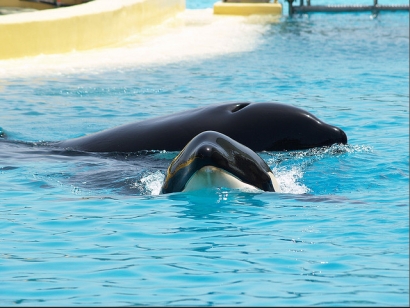 Kohana’s first calf, Adan, born on October 12, 2010, was taken away from her and bottle-fed from birth because she wouldn’t, couldn’t, didn’t know how to mother him. Shipped over from SeaWorld Orlando before she turned four and pregnant by age seven, she had little opportunity to watch other females give birth and care for their calves, which is how orcas learn, just like humans.
Kohana’s first calf, Adan, born on October 12, 2010, was taken away from her and bottle-fed from birth because she wouldn’t, couldn’t, didn’t know how to mother him. Shipped over from SeaWorld Orlando before she turned four and pregnant by age seven, she had little opportunity to watch other females give birth and care for their calves, which is how orcas learn, just like humans.
At age one, deprived of all natural mothering, Adan is somehow still alive and beginning to eat the standard captive-killer-whale diet of dead fish.
Kohana reportedly tolerates his presence, but that’s about all. And now Kohana is pregnant again.
Click the image below to watch a 1:15 video of Adan being bottle-fed during his first months of life.
Click the image below to watch a 1:17 video of how Loro Parque staffers extracted Kohana’s milk to feed her calf.
Tim Zimmermann reports that he’s also “picking up whispers” that two of SeaWorld’s stateside female killer whales are pregnant via A.I. with donor sperm from a 20-something-year-old male named Kshamenk, captured in September 1992 and now living at Mundo Marino in Buenos Aires, Argentina, in appalling conditions that SeaWorld seems to choose to ignore.
To see a 0:46 video of the disgusting tank Kshamenk shares with a Bottlenose dolphin called Floppy, click the image below.
The two stateside SeaWorld killer whales inseiminated with Kshamenk’s sperm are Kohana’s mom, Takara, 20, at SeaWorld San Antonio, and Kohana’s maternal grandmother, Kasatka, 34-ish, the fearsome, wild-caught, alpha female at SeaWorld San Diego who almost killed trainer Ken Peters in November 2006.
It’s not the first time Kohana’s mother and grandmother have been inseminated with the same donor sperm. Kohana herself was conceived that way back around December 2000 when her mom and grandmom, still together in San Diego then, were both inseminated with Tilikum’s sperm.
The results of that double insemination were Kasatka’s second calf, Nakai, now 11, who still lives with Kasatka in San Diego, and Takara’s first baby, Kohana, who went with Takara from San Diego to Orlando two years later and then got shipped off to Loro Parque before she turned four.
Kasatka has had one more baby since she had Nakai. Her daughter Kalia, now seven, is also still with her in San Diego.
Takara has had two more offspring since she had Kohana.
Takara’s second baby was sired by Taku (also fathered by Tilikum) almost as soon as Takara and little Kohana arrived in Orlando.
Takara’s second calf, a male named Trua, was born in Orlando in November 2005. Three months later, SeaWorld shipped firstborn Kohana to Loro Parque. Nine months after that, it sent Trua’s dad, Taku, who’d lived all his life in Orlando, to San Antonio.
Taku died in San Antonio less than a year later, at age 14.
When Takara got pregnant a third time, this time by Tilikum, she was also sent to San Antonio. (Taku was dead by then.)
When Takara was sent to San Antonio, her son, Trua, was kept behind. He had just turned three.
Takara’s third baby, daughter Sakari, almost two, is still with her in San Antonio. For now.
In the wild, among well-studied Pacific Northwest resident populations, at least, killer whale mothers and offspring stay together for life in family groups that span generations. SeaWorld knows this but often chooses to ignore it.
How much longer SeaWorld will let Takara and Sakari stay together now that Takara is pregnant again only SeaWorld knows.
• Nov 29: The young, rescued killer whale named Morgan, born in freedom, is shipped from the Netherlands to the Canary Islands to live her life among captive-born killer whales at SeaWorld’s sister facility, Loro Parque.
As AP reporter Toby Sterling notes, “International treaties prohibit the trade of killer whales… without difficult-to-obtain exemption permits. Fewer than 50 orcas are held in captivity worldwide and the bulk of them are owned by SeaWorld…. A female capable of breeding and introducing new genes into the pool of captive orcas is worth millions of dollars…. Though Morgan cannot be transferred to the United States, any offspring she has may be.”
To see a good Huffington Post slideshow of Morgan’s transfer (had it happened in the U.S., SeaWorld would have kept cameras out), click either image below.
December 2011
• Dec 10: Stefan Jacobs reports on orcahome.de that he hears from a source that all the while Marineland of Canada was fighting to stop SeaWorld from reclaiming the killer whale named Ike, it was keeping a big, fat secret: Ike had already, finally, made his now-former-Canadian-tankmate, Kiska, pregnant.
And not just pregnant, but pregnant with twins — a male and a female, due around the end of 2012.
If Kiska is pregnant and does give birth, the babies won’t be her first. She has already had one miscarriage and four babies by her previous male tankmate, wild-caught Kandu VII, who died at age 25 or so in December 2005.
The babies are all dead now, too. None lived even to age six.
Kiska’s long-term female tankmate, wild-caught Nootka V, also had many babies by Kandu before she died at age 29 or so in January 2008: two miscarriages and five births. All those five babies are dead, too.
Nootka’s firstborn, Noecia, died a couple of months before her 12th birthday, shortly after micarrying her own first calf. As happens only in captivity, her baby’s father was her own father: Kandu.
• Dec 22: SeaWorld spokesperson Nick Gollattscheck announces that Tilikum has been moved to a medical pool so vets can monitor his health after trainers noticed a change in his behavior the previous week — which, let it be noted, they didn’t need to be in the water with him to do.
The small back medical pool, let it also be noted, is where Tilikum was confined after killing Dawn Brancheau.
SeaWorld refuses to divulge any details about Tilikum’s condition but does say he seems to be doing better. The announcement comes at the start of a holiday weekend, when SeaWorld may be hoping people will be too busy to pay much attention.
Click the image below to watch a 3:58 video of a December 22, 2011 SeaWorld Orlando “One Ocean” show without trainers doing tricks in the water and without Tilikum doing his trademark big leaps and splashes at the end.
Pretty boring. Not much of a crowd. No wonder SeaWorld is eager to put trainers back in the water again.
Dec 24: On Christmas Eve, 2012, the second anniversary of the death of trainer Alexis Martinez at Loro Parque, as Tim Zimmermann respectfully notes, Zimmermann reports on the news he’s hearing and video and photo documentation he’s receiving that the young rescued female killer whale named Morgan sent from the Netherlands to Loro Parque a month earlier is not being welcomed by the SeaWorld-bred-and-born killer whales in residence there, as Loro Parque officials insisted she would be.
Quite the opposite. The defenseless four-year-old is instead being harassed and attacked by Loro Parque’s four older killer whales — the two females, Kohana and Skyla, especially (in killer whale societies, females rule) — and has serious rake and bite marks on her head, sides and dorsal fin to show for it.
To watch a 4:20 video of a Loro Parque killer whale show (performed before an almost empty stadium) that contains footage of park owner Wolfgang Kiessling and two trainers examining Morgan’s dorsal fin in the background, click the image below.
To watch a murky but nonetheless disturbing 6:31 underwater video of Loro Parque’s two older females, Kohana and Skyla, attacking Morgan, click the image below.
January 2012
• Jan 3: Candace Calloway Whiting reports that SeaWorld may be planning to shuffle killer whales again and send a 19-year-old male named Keet from San Antonio to San Diego. It will be Keet’s fifth transfer since he was separated from his mom before age two.
Keet’s mom was Kalina, the originl Baby Shamu. Keet was her firstborn, the First Baby of the First Baby, which one would think might entitle him to special treatment.
But no. Kalina got pregnant again in San Antonio, where Keet was born, and SeaWorld decided that the best way to protect her new pregnancy was by separating mother and son.
So Kalina was shipped to Orlando, her birthplace, where she at least was reunited with her mom, wild-caught Katina, whom she hadn’t seen in almost five five years — since being shipped out at age four to tour Seaworld’s parks as the original Baby Shamu.
And Keet stayed in San Antonio for five more years before SeaWorld began bouncing him around, too.
He finally bounced back to San Antonio. Now, after seven years, he may be leaving again.
Jan 24-25: A female Atlantic spotted dolphin is found stranded on a beach in Panama City, Florida, and taken to nearby Gulf Marine Park, but only until SeaWorld Orlando can come claim her. She arrives in Orlando the next day, and chances are pretty much 100 percent now that, if she lives, she’ll never know freedom again.
In a 3:32 MickeyUpdates.com video report, SeaWorld Orlando supervisor of animal care Pedro Ramos gives a very positive report of the spotted’s condition. She’s eating, interacting, swimming on her own — so strong and healthy, in fact, that one wonders how and why she stranded and needed to be rescued at all.
To watch the 3:32 Mickey Updates.com video, click the image below.
Gulf World says it sent the spotted to Orlando for the same reason Mote sent the melon-headed whale named Dante to Orlando in October: because SeaWorld has the budget and facilities to care for her and Gulf World doesn’t.
Maybe. Or maybe Gulf World just doesn’t want or need to bother with a spotted. The last one it rescued in November 2009 died two days later. And the facility has done a lot better and made a lot more money off its six rescued rough-toothed dolphins — a tropical, deep-water species that no other U.S. facility has on captive display.
Gulf World has a full compliment of Bottlenose dolphins, too, of course: two captured, three rescued, seven captive-born. Three of the captive-born, ages ten, six and six, were sired by a wild-caught male named Lightning, who also fathered three other babies who died — two before their first birthday, one before age five.
Lightning is at the Mirage Hotel & Casino in Las Vegas now, helping to restock that exhibit, where captive-borns don’t last long. He has sired four babies there so far. His firstborn died at age two. A three-year-old and two newborns are still alive.
February 2012
• Feb 6: San Diego U.S. District Court Judge Jeffrey Miller listens as SeaWorld and PETA argue about whether the suit PETA filed in October 2011 on behalf of the five captured killer whales in SeaWorld’s collection should (PETA) or shouldn’t (SeaWorld) be allowed to proceed.
PETA and supporters want Thirteenth Amendment protections against slavery and involuntary servitude extended to these five “nonhuman persons” (Kasatka, Corky and Ulises in San Diego; and Katina and Tilikum in Orlando) and want these orcas who were born free and forced into captivity moved out of their SeaWorld tanks into something closer to a natural environment — a seapen, perhaps.
SeaWorld argues that the suit is a baseless publicity stunt that seeks to interfere with “the public’s right to enjoy and learn more about marine mammals” — which to SeaWorld means watching them do tricks.
SeaWorld attorney Theodore Shaw wants Judge Miller to throw out PETA’s suit immediately. “With all due respect,” he tells the judge, “the court does not have the authority to even consider this question…. Neither orcas nor any other animals were included in the ‘We the people’… when the Constitution was adopted.”
Judge Miller is not unsympathetic. He expresses concern, for example, that letting the case go forward could interfere with the Navy’s ability to use dolphins for military purposes — as if that would be a bad thing.
But despite his concerns, Judge Miller does not throw out the case. He lets PETA lawyer Jeffrey Kerr present his arguments, too.
Kerr tells Miller that, yes, the suit pushes the legal boundaries and definitions of persons and constitutional protections but says it’s “the next frontier” in the fight for equal rights.
Miller thanks both attorneys and says he’ll decide soon.
Whatever happens next, Kerr tells the Telegraph after the hearing, history has already been made: for the first time ever, a federal court has heard arguments as to whether “living, breathing feeling beings” can be enslaved simply because they weren’t born human.
• Feb 8: Two days after letting PETA argue in favor of extending constitutional protections to an animal species, Judge Jeffrey Miller dismisses PETA’s suit, agreeing with SeaWorld that “there is simply no basis to construe the Thirteenth Amendment as applying to non-humans.”
SeaWorld is pleased and says Judge Miller’s swift ruling proves PETA’s lawsuit was absurd. PETA and friends are disappointed but vow to fight on.
• Feb 14: David Kenney, SeaWorld San Diego’s founding veterinarian (San Diego was Seaworld’s first park), dies of cancer in Montrose, Colorado at age 77.
According to obituatries published a month later, Kenney took credit for coming up with the name Shamu and figuring out how to fly the first Shamu, a female captured in the Pacific Northwest in 1965, from Seattle to SeaWorld San Diego, where she died within six years.
Kenney is said to have worked hard to keep the dolphins, whales and other animals in his care alive and healthy when virtually nothing was known about marine-mammal biology or physiology. And he reportedly quit SeaWorld in 1971 or 1972 because he wanted it to put as much emphasis on doing science as making money and SeaWorld had other plans.
Even after Kenney quit, however, he continued capturing dolphins for SeaWorld and genuinely believed that, given the condition some were in when captured and the veterinary practices he helped develop, they were better off living in a tank at SeaWorld than living free in the wild.
• Feb 19: Not for the first time and, no doubt, not for the last, dolphin brain expert Lori Marino of Emory University, ethicist Tom White of Loyola Marymount and Chris Butler-Stroud of the Whale and Dolphin Conservation Society (WDCS) put their professional reputations on the line at the annual conference of the American Association for the Advancement of Science (AAAS) in Vancouver to stand up for what they believe to be true.
The courts may not be ready to deal with it. Many scientists may not be ready to accept it. The marine-park-visiting public may not know it, and marine parks don’t want people to know. But that doesn’t change the facts:
Given everything scientists and researchers are learning about how smart, self-aware and humanlike dolphins are, these advocates argue, it’s time, past time, to recognize them as nonhuman persons and grant them equal protections under the law.
Which would mean no more killings. No more captures. No more breeding them in captivity. And no more making them perform like circus clowns.
• Feb 27: Less than three months after reclaiming the nine-year-old male killer whale named Ike from Marineland of Canada and shipping him to San Diego, SeaWorld packs up the 19-year-old male named Keet at SeaWorld San Antonio and ships him to San Diego, too — for breeding purposes, most likely, though only SeaWorld knows, and SeaWorld isn’t saying.
It’s the fifth time Keet has to endure the stress and disruption of relocation. But at least San Diego won’t be completely new to him. He lived there for five years while making the rounds of SeaWorld parks before he arrived back at San Antonio, his birthplace, in April 2004.
All the orcas Keet lived with the last time he was in San Diego are still there — except for Sumar, who died suddenly at age 12 in September 2010, triggering this latest round of the SeaWorld Orca Shuffle.
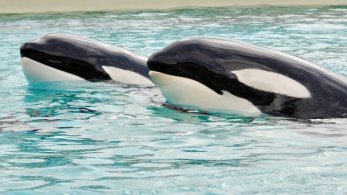 In addition to the orcas Keet has met at San Diego before and no doubt remembers (orcas have good memories), he will be meeting two other orcas now in San Diego for the first time:
In addition to the orcas Keet has met at San Diego before and no doubt remembers (orcas have good memories), he will be meeting two other orcas now in San Diego for the first time:
1. Ike, who arrived from Canada three months earlier.
2. Keet’s own daughter, Kalia, now seven, whom he fathered with the fearsome Kasatka during his last stay in San Diego and who was born eight months after Keet shipped out.
Keet’s only other offspring so far is another daughter, Halyn, born to a captive-born female named Kayla, then 17, at SeaWorld San Antonio in October 2005.
Like Kohana in Loro Parque, Kayla rejected her calf and, worse, according to Tim Zimmermann, basically tried to kill her baby girl. And, like Adan in Loro Parque, Halyn had to be taken away from her mother and raised by hand.
Kayla was moved to SeaWorld Orlando three months after Halyn was born. According to Zimmermann, she was pregnant again when she was moved and delivered a stillborn calf in Orlando in April 2007.
Little Halyn died at SeaWorld San Antonio before she turned three.
To watch a 2:30 ABC 10 News report on Keet’s arrival in San Diego that offers a glimpse into what killer whales endure when SeaWorld ships them around like cargo and hear a former SeaWorld trainer insist that the process isn’t at all stressful and, besides, we need to keep killer whales in captivity so we can learn about them and help preserve them, click the image below.
March 2012
• March 5: SeaWorld shows its colors again. Recall that the captive-born orca named Kayla, mentioned above, had to be separated from her firstborn daughter in San Antonio to prevent her from killing her baby and then gave birth to a stillborn calf in Orlando in April 2007.
Kayla apparently hasn’t conceived since, which is probably just as well. But Tim Zimmermann reports that SeaWorld is about to change that.
Now that Kasatka in San Diego and her daughter Takara in San Antonio have both been successfully impregnated with donor sperm from the wild-caught male named Kshamenk living in appalling conditions at Mundo Marino in Buenos Aries, it looks like SeaWorld has decided that Kayla is next in line.
If Kayla is inseminated and does conceive, SeaWorld will have made one female at each of its three parks pregnant with a baby carrying a fresh infusion of killer whale genes.
It’s possible, of course, that Kayla will reject and turn on her calf again. But it seems SeaWorld has decided to worry about that when the time comes.
• March 19: Before anyone knows it’s happening — except for NMFS, which has to approve all marine-mammal imports and exports and apparently rubber-stamped this one — SeaWorld San Diego receives shipment of a ten-year-old male pilot whale named Argo from a marine park called Kamagawa SeaWorld in Japan.
The arrival of any dolphin or whale from Japan, where thousands of dolphins and stray members of other marine-mammal species are rounded up and slaughtered in Taiji every year while a few are selected out to go to marine parks, is offensive and suspect.
SeaWorld insists that it doesn’t take animals from these sorts of “drives” anymore and hasn’t for a long time. Perhaps. But Argo’s arrival demonstrates that SeaWorld does accept animals from other marine parks that may have gotten them originally in Taiji. It’s called dolphin laundering.
This pilot whale has allegedly been at Kamagawa SeaWorld (no official connection to SeaWorld U.S. but clearly a friendly sister park) since stranding near that facility in 2004. Now officials at that park have apparently just decided all on their own that Argo would be happier living with other pilot whales in San Diego.
How nice for SeaWorld. In less than 12 months it has doubled the size of its captive pilot whale collection from three animals to six and has achieved just the right mix with the addition of this young male and the two young female rescues still in Orlando to foster production of more captive-borns.
For now, though, until SeaWorld San Diego decides Argo is ready to meet the park’s other captive members of his species, the new arrival, sent all the way from Japan so he could enjoy some pilot whale companionship, swims in a tank alone.
• March 22: Colin Patching of WDCS reports that, four months after being shipped from the Netherlands to Loro Parque because Dutch officials decided with SeaWorld’s help that this was best for her, the young rescued female killer whale named Morgan is now being broken in as a performing orca and is still being attacked by the SeaWorld-bred-and-born killer whales already in residence, with more fresh wounds to show for their ongoing aggression.
The harassment is so unrelenting, apparently, that Morgan is kept segregated or segregates herself in a shallow medical pool with little Adan, Kohana’s firstborn, who had to be taken away from her and hand-raised when Kohana showed no interest in mothering him.
Now Kohana, one of Morgan’s harassers, is pregnant again and due to give birth later this year — meaning Loro Parque will need to empty out that medical pool soon for Kohana’s use.
Adan and Morgan could both be dead by then, given that he gets no mothering and she gets nothing but harassment and stress. But if both are still alive when Kohana needs that pool, Loro Parque will have to figure out what to do with them.
Will it try to sell them? Will SeaWorld try to ship one or both to the U.S.? There’s no way to know yet.
Other unknowns:
• Will Ike and Keet adjust to their SeaWorld San Diego surroundings and each other?
• Will Kiska, up in Canada, really give birth to twins?
• Will the three females SeaWorld has now forcibly impregnated have healthy babies and be good moms?
• What about pilot whale 300, aka Caroline, the female with severe curvature of the spine? Are her spine brace and daily therapy sessions helping her? Or hurting her?
• And what about that rescued female Atlantic spotted dolphin Gulf World handed over to SeaWorld Orlando in January? There hasn’t been any news about her lately. How’s she doing? And what are SeaWorld’s plans for her?
Finally: What will the outcome be of the SeaWorld/OSHA hearing? Which way will Administrative Law Judge Ken S. Welsch rule?
• Will he uphold OSHA’s citation and find SeaWorld guilty of endangering the lives of killer-whale trainers as well as killer whales in its drive to exploit the human fascination with dolphins and whales?
• Or will he dismiss OSHA’s findings and let SeaWorld go back to business as usual until another tragedy strikes or humans break through to a higher level of genuine respect for dolphins and whales because, among other things, until that happens, the economic reality is that Orlando needs the tourist business SeaWorld attracts?
Judge Miller hasn’t issued his ruling yet, but he should be doing that shortly.



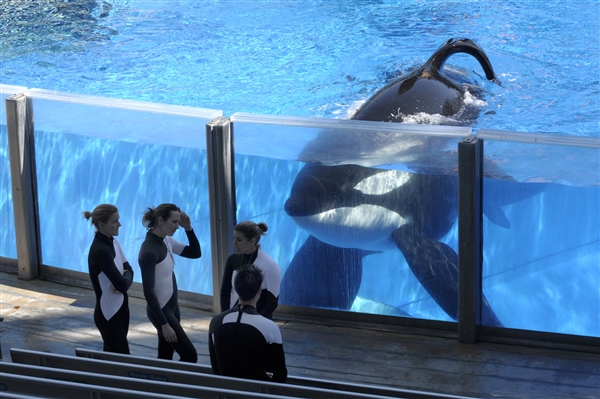
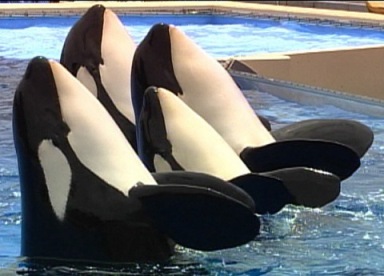
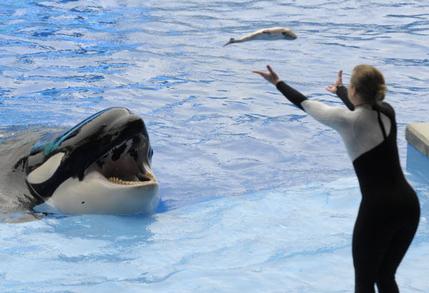

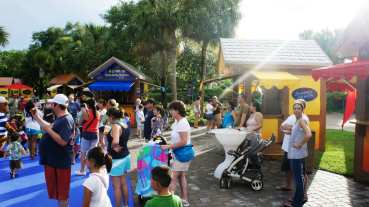
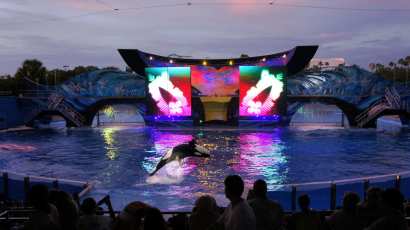
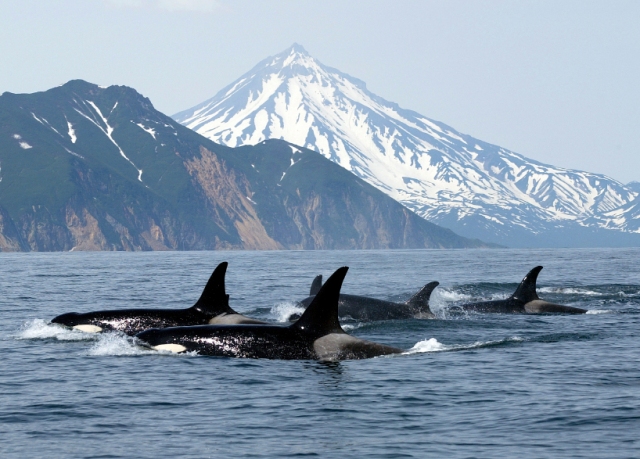


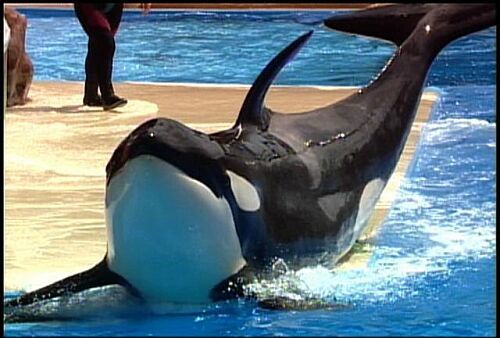

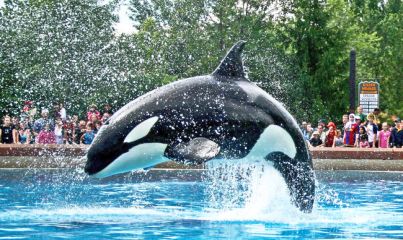
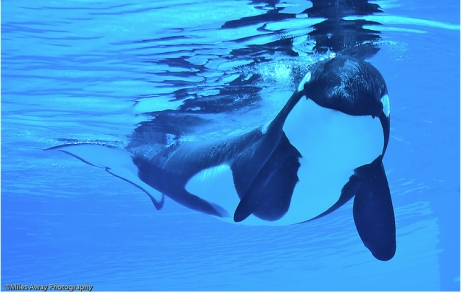

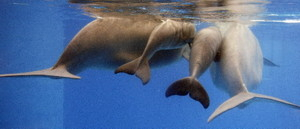
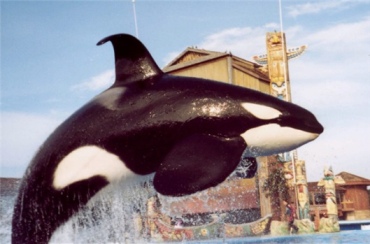
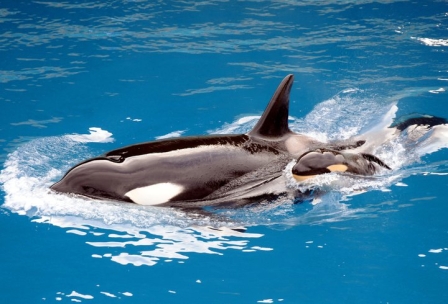
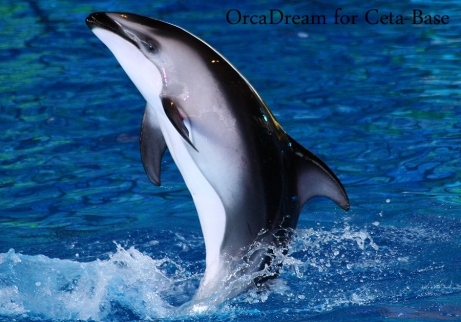
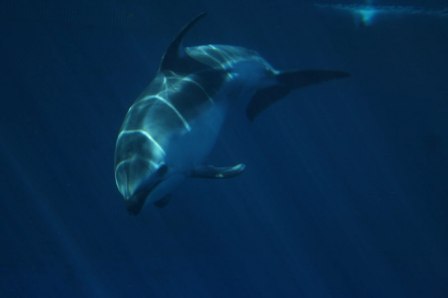
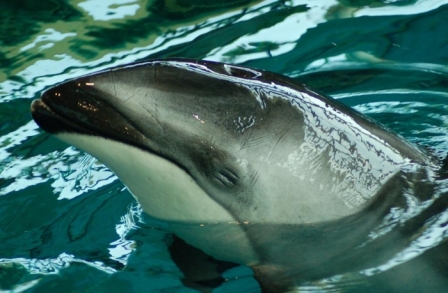
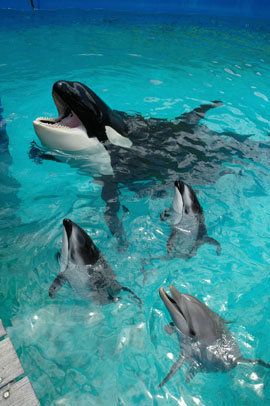
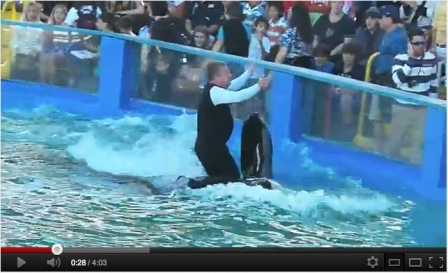
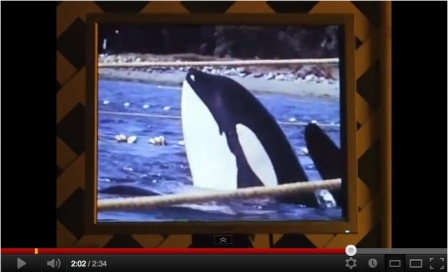
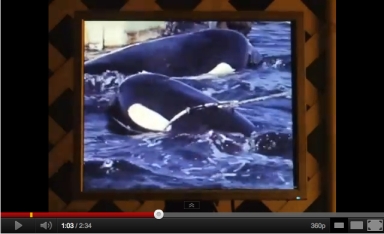
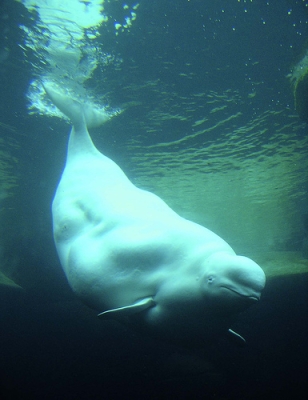
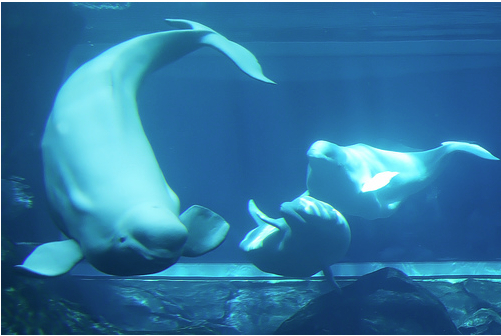



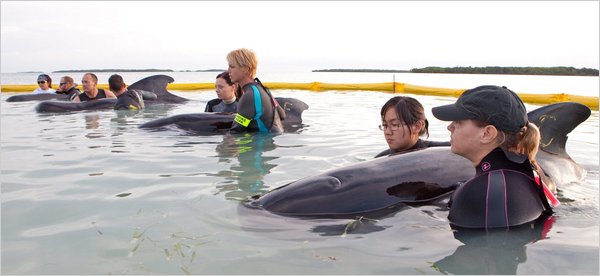
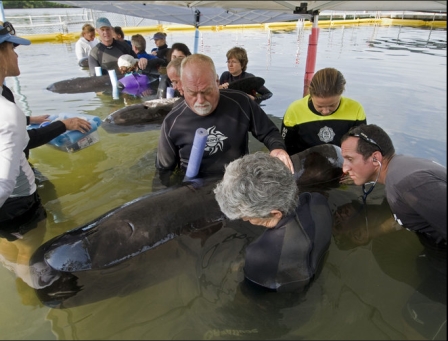
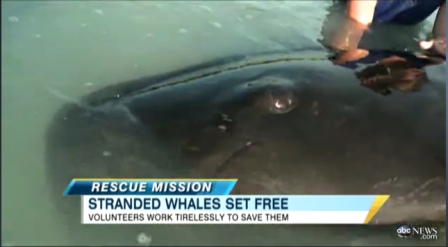

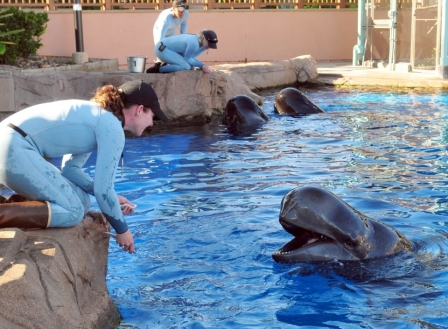
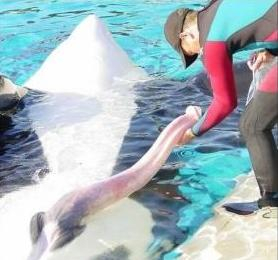
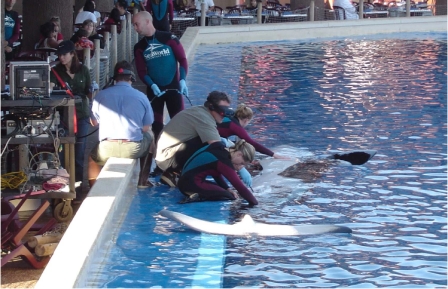
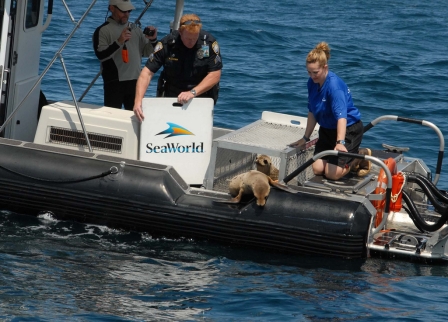
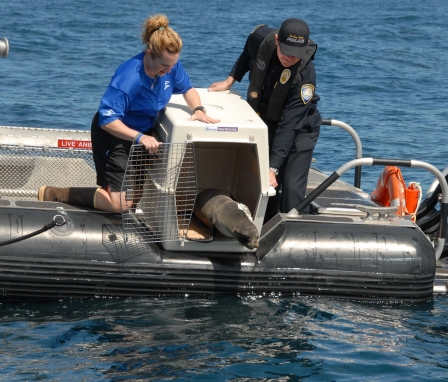


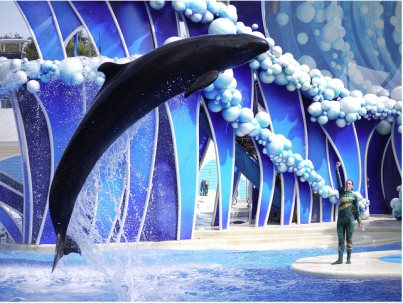


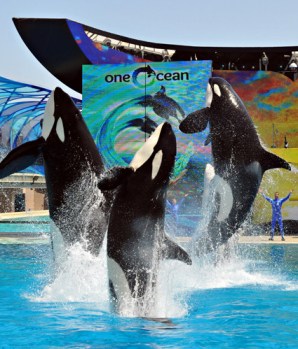
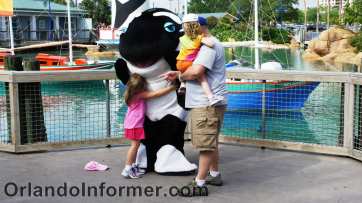


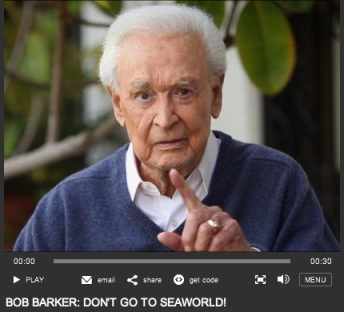

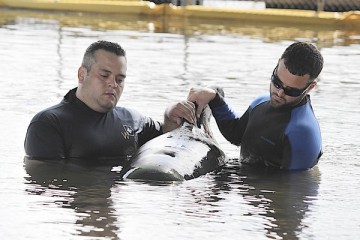
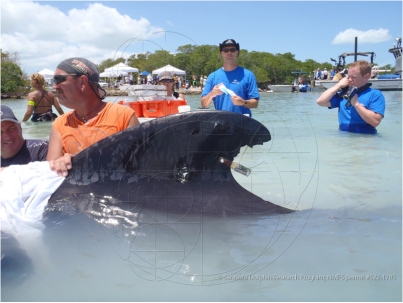
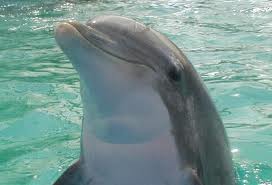
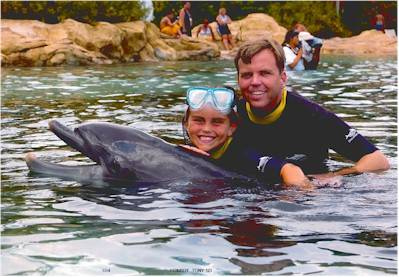

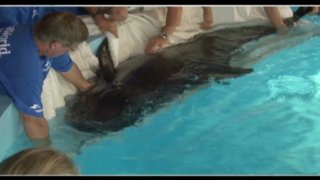
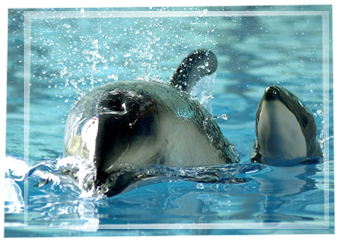
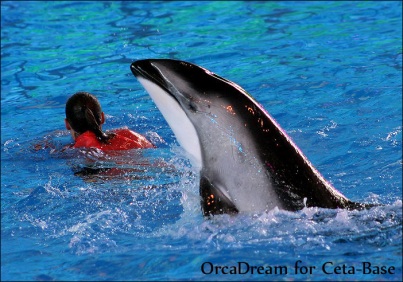

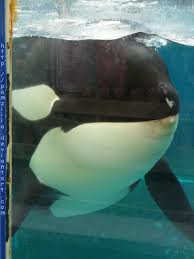

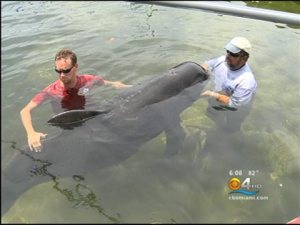
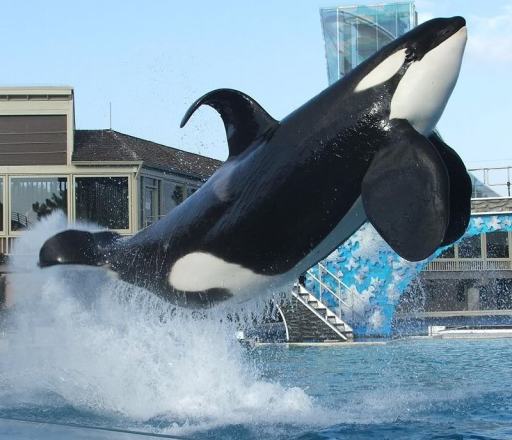




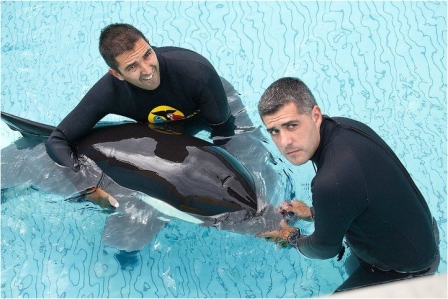
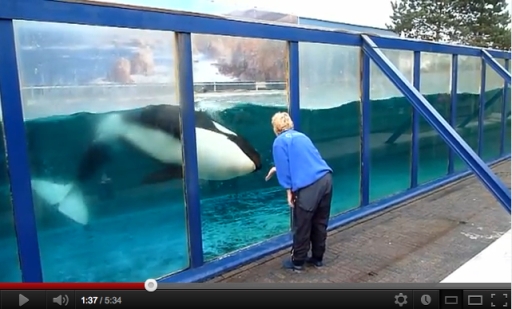
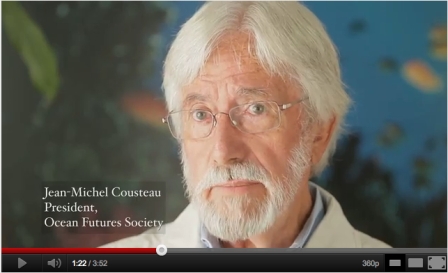
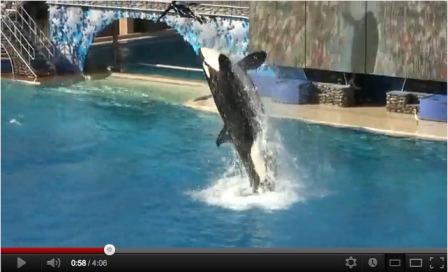
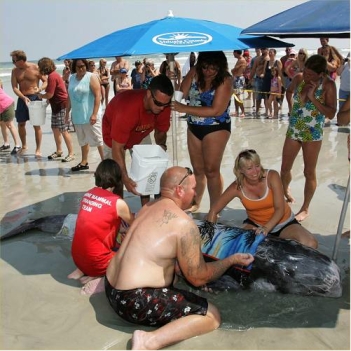
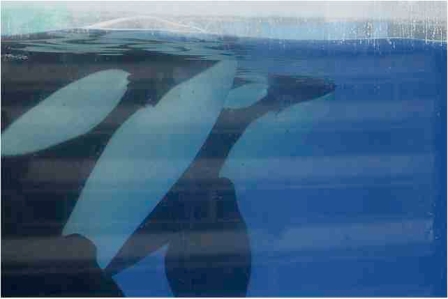


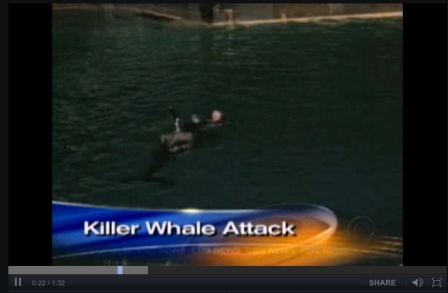


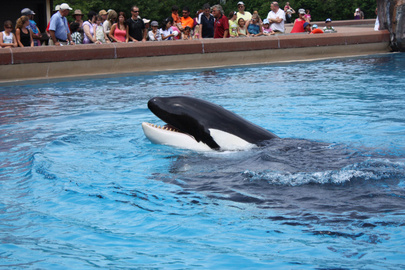

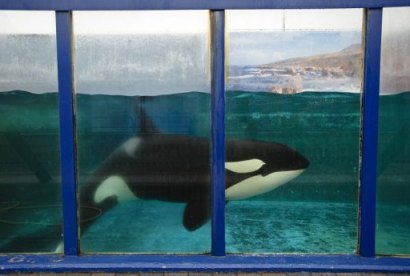
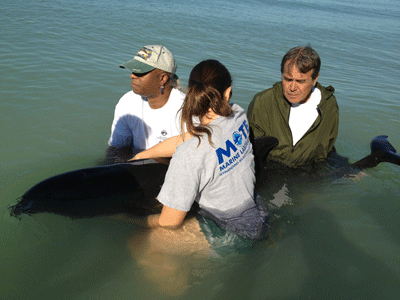
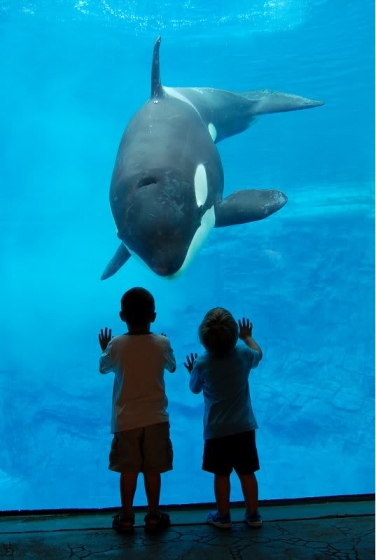

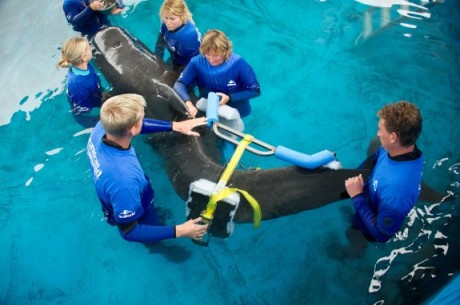
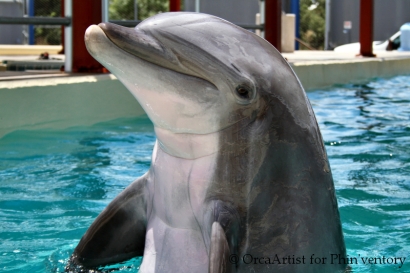


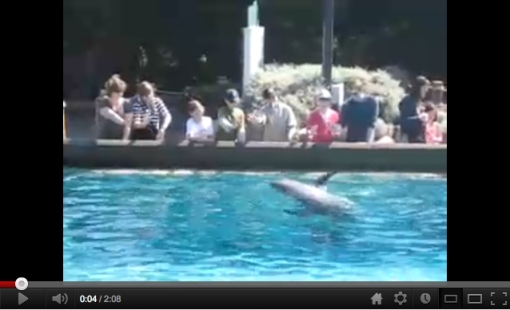
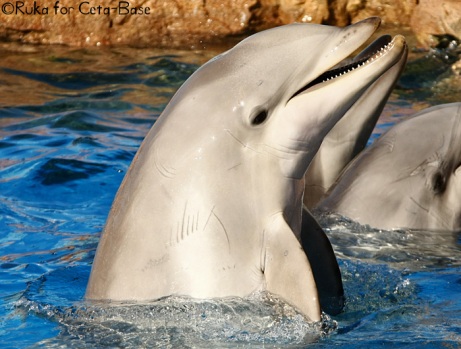
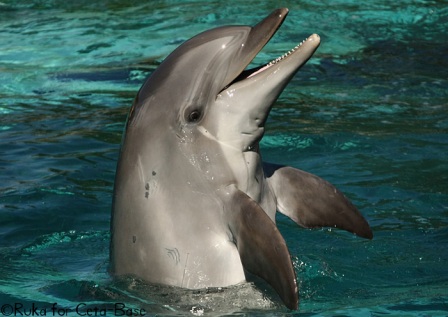

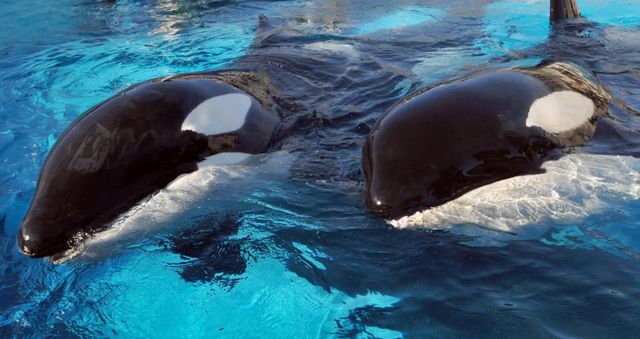
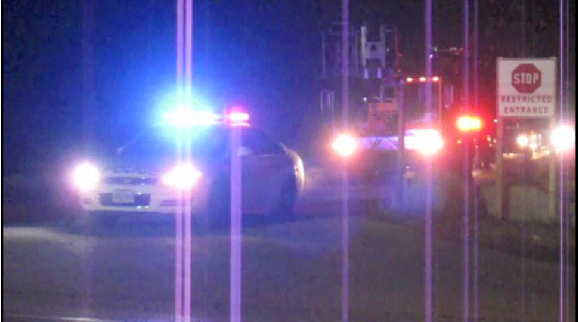
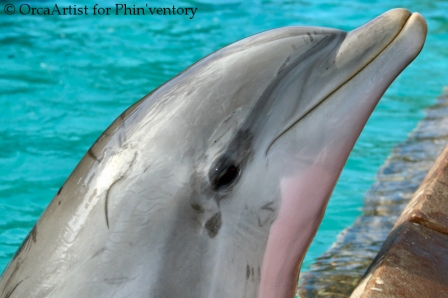
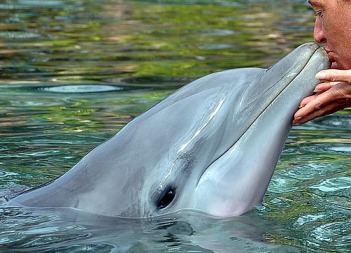
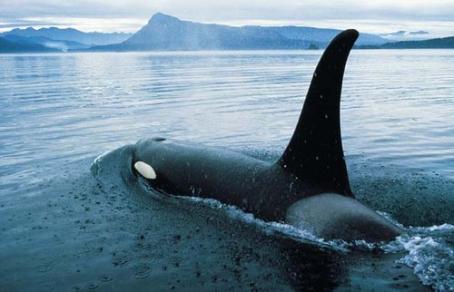
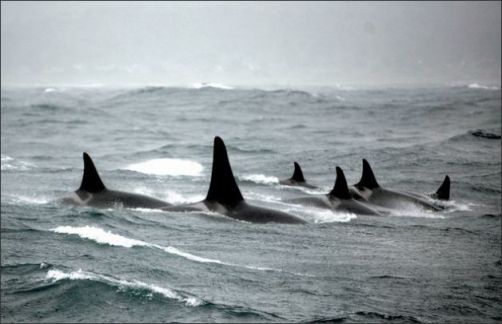
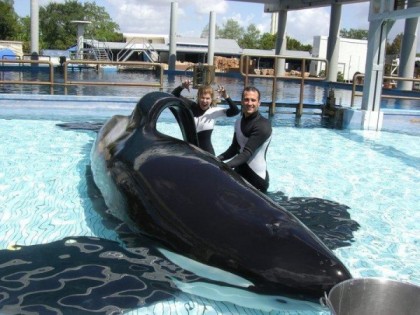
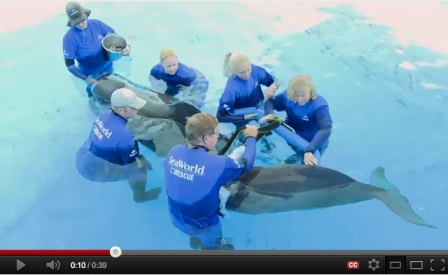

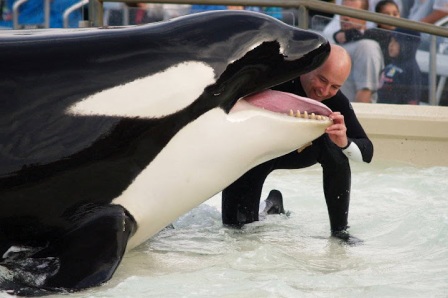

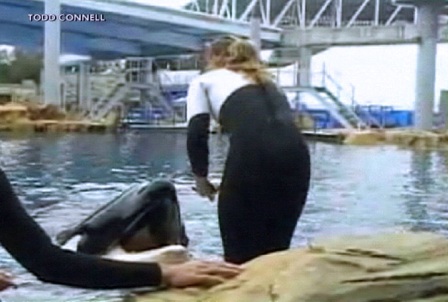
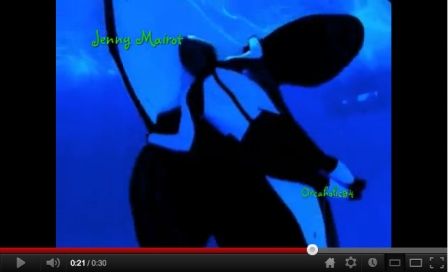

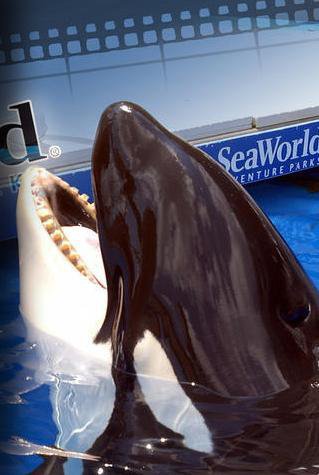

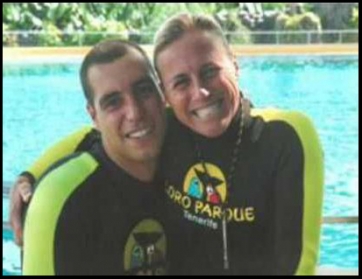
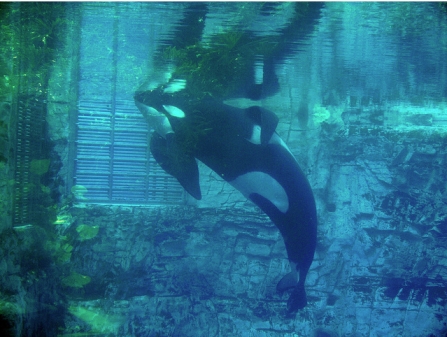

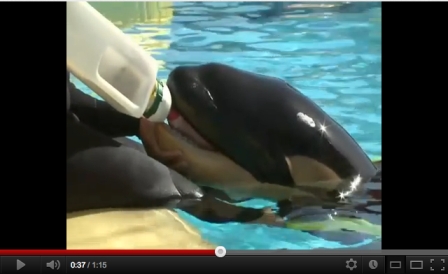
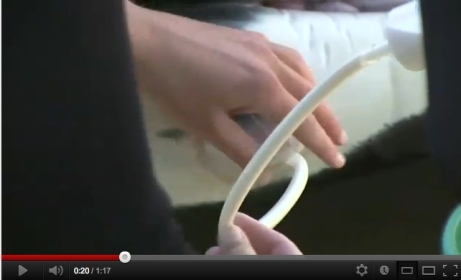

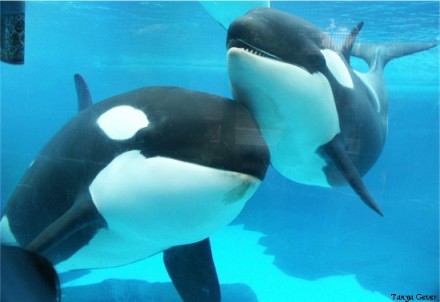

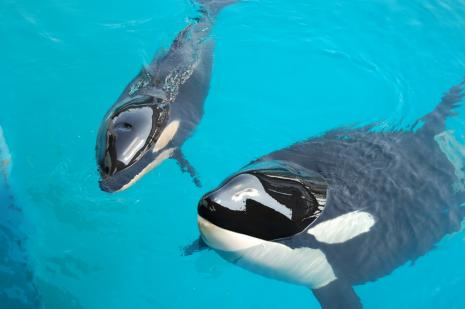
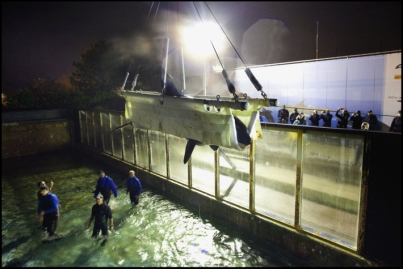
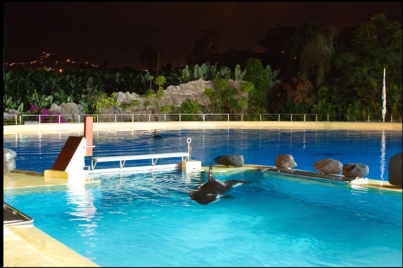
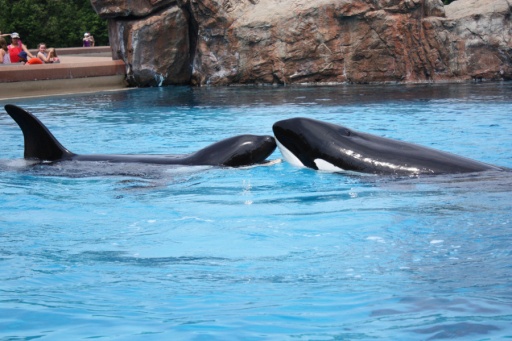

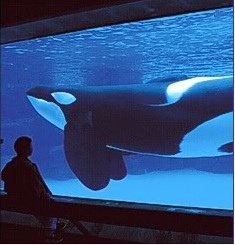

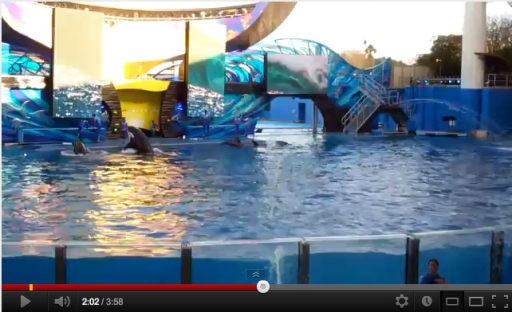
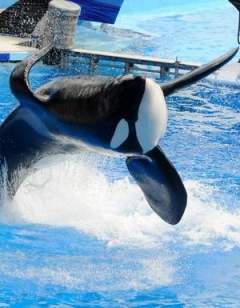
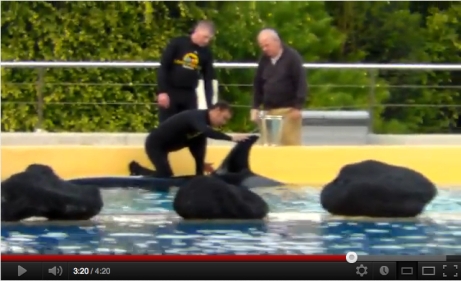


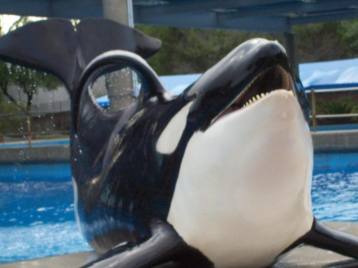
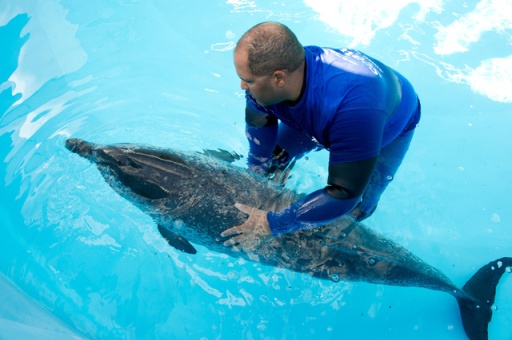
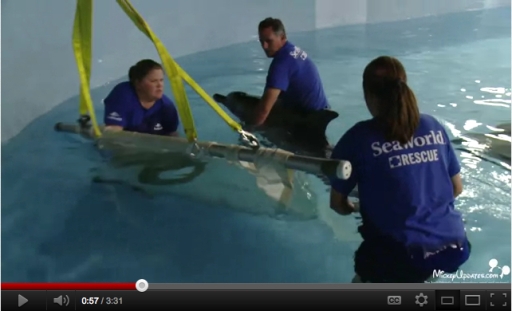
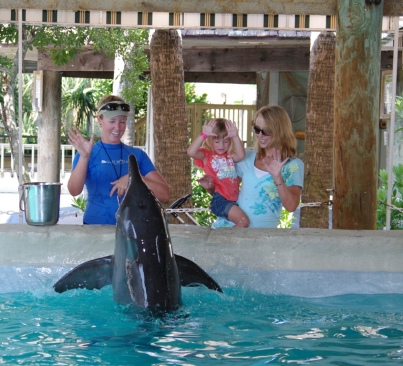
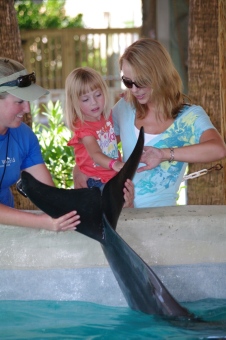



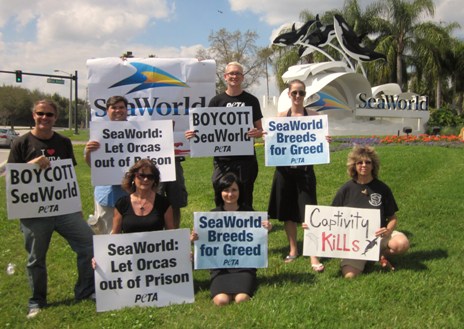
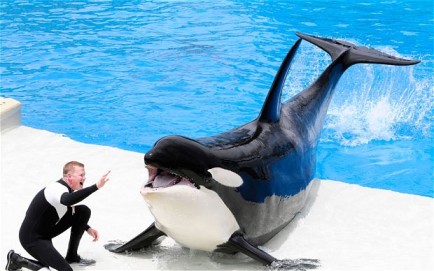
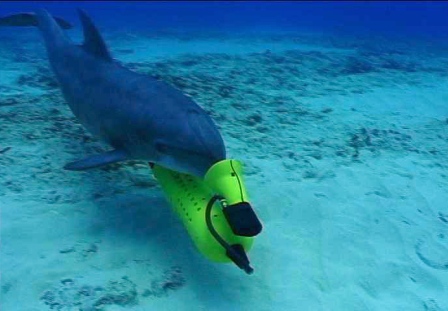

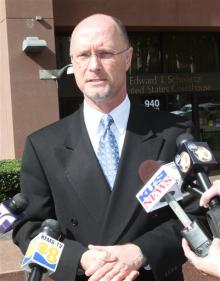
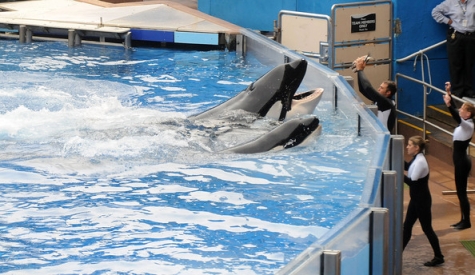
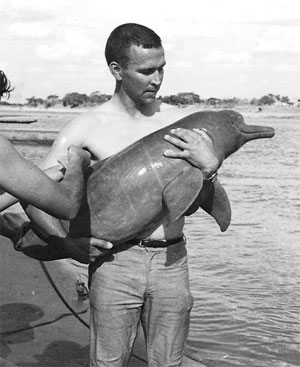


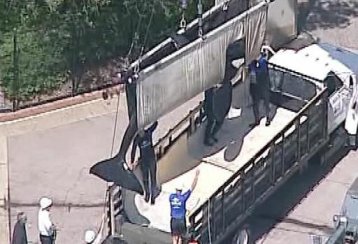
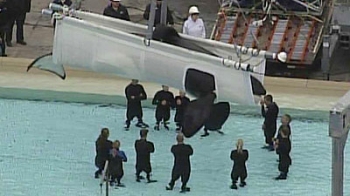
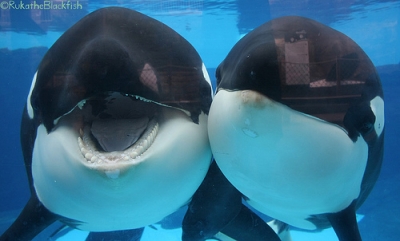
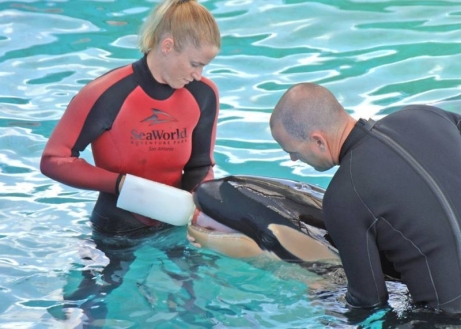
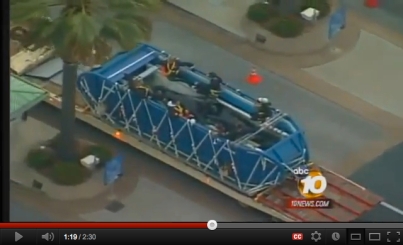

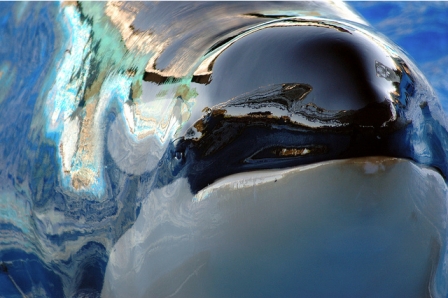
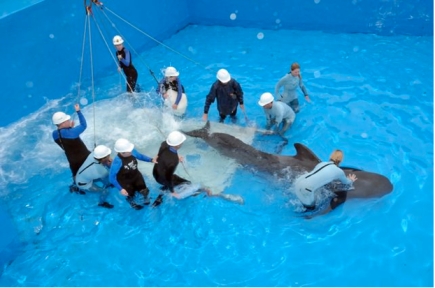


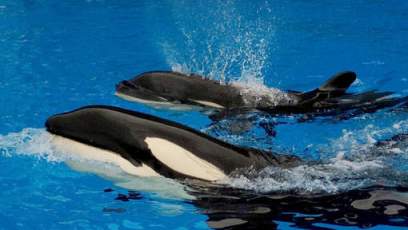
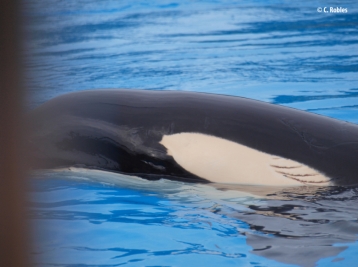


just found your page!! i love it, keep it coming!! from a type 2 dolphin lover
kellsi
LikeLike
Hello Gini – how are you? It would be great to catch up with you. Thanks for this timeline – very compelling put together in one place like this.
LikeLike
Naomi — How wonderful to hear from you. Email to follow.
LikeLike
Gini, this is brilliant. Like Sam and Jeff said, I am sharing far and wide. Having everything in one spot like this really reveals the extent of SeaWorld’s philosophy. And it’s just one year’s worth 😦
LikeLike
And it’s not even everything. Thank you so much. This is so encouraging.
LikeLike
Wow Gini! This is an incredibly comprehensive summary of events. I second what Jeff says – thanks so much for taking the time to put this together. I am sharing this page far and wide.
LikeLike
Thank you! And thank you for speaking out, too!
LikeLike
Gini, thank you for this remarkable chronology of the busy year.This is a great work and much appreciated.
LikeLike
Jeff, Thank you so much for the kind words. And thanks even more for your own work and willingness to speak out and try to educate people about the ugly realities of captivity.
LikeLike